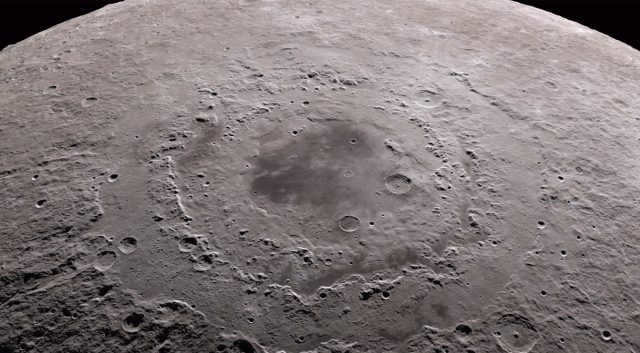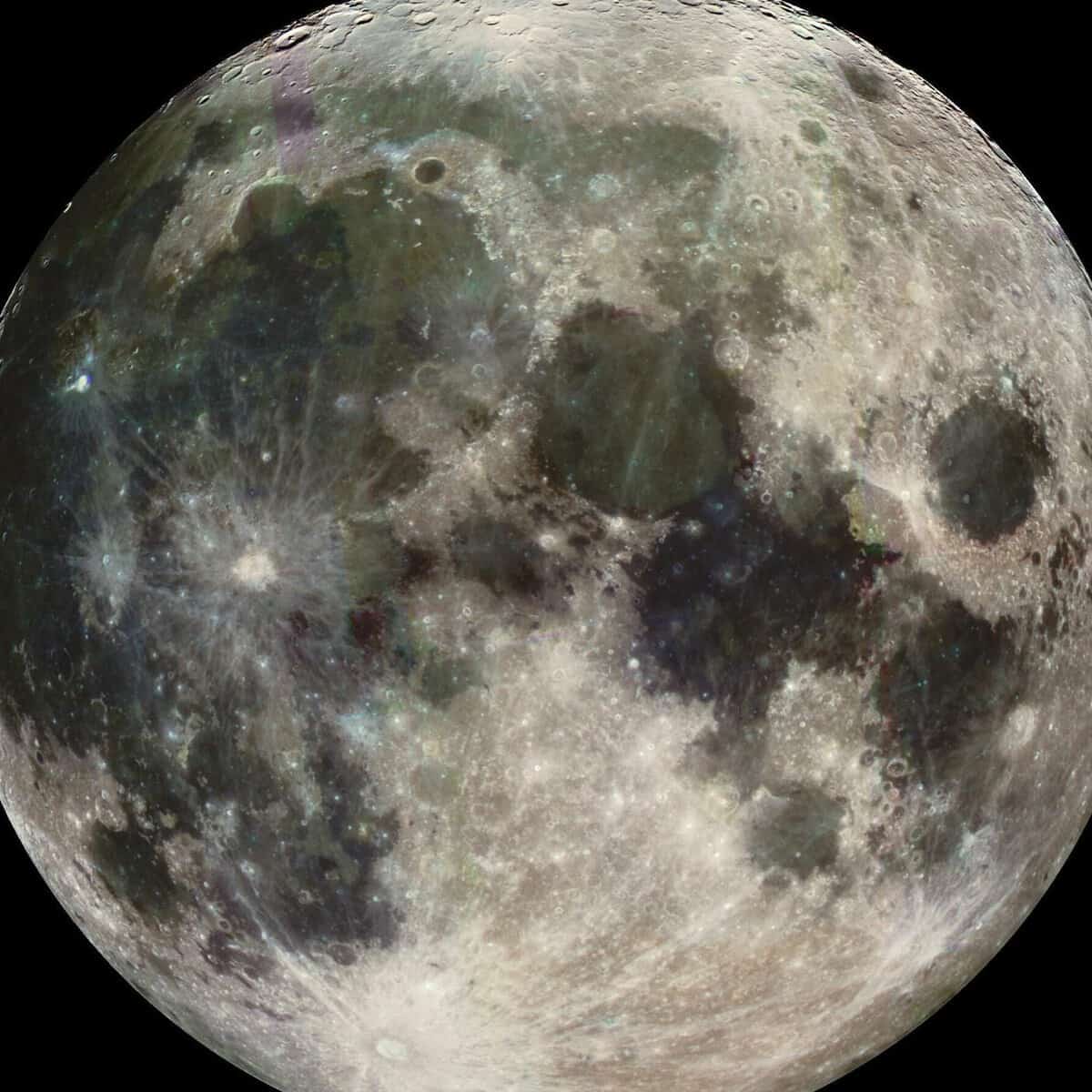The moon is a natural satellite that orbits around the Earth. It is the Earth’s only natural satellite and is the fifth-largest moon in the Solar System. The moon is approximately 238,855 miles away from Earth and has a diameter of about 2,159 miles. It takes about 27.3 days for the moon to complete one orbit around the Earth. The moon’s surface is covered with craters, mountains, and plains, and it has no atmosphere or weather. The moon’s gravity affects the tides on Earth and also influences the Earth’s rotation. Humans have been fascinated by the moon for centuries and have sent astronauts to explore its surface.
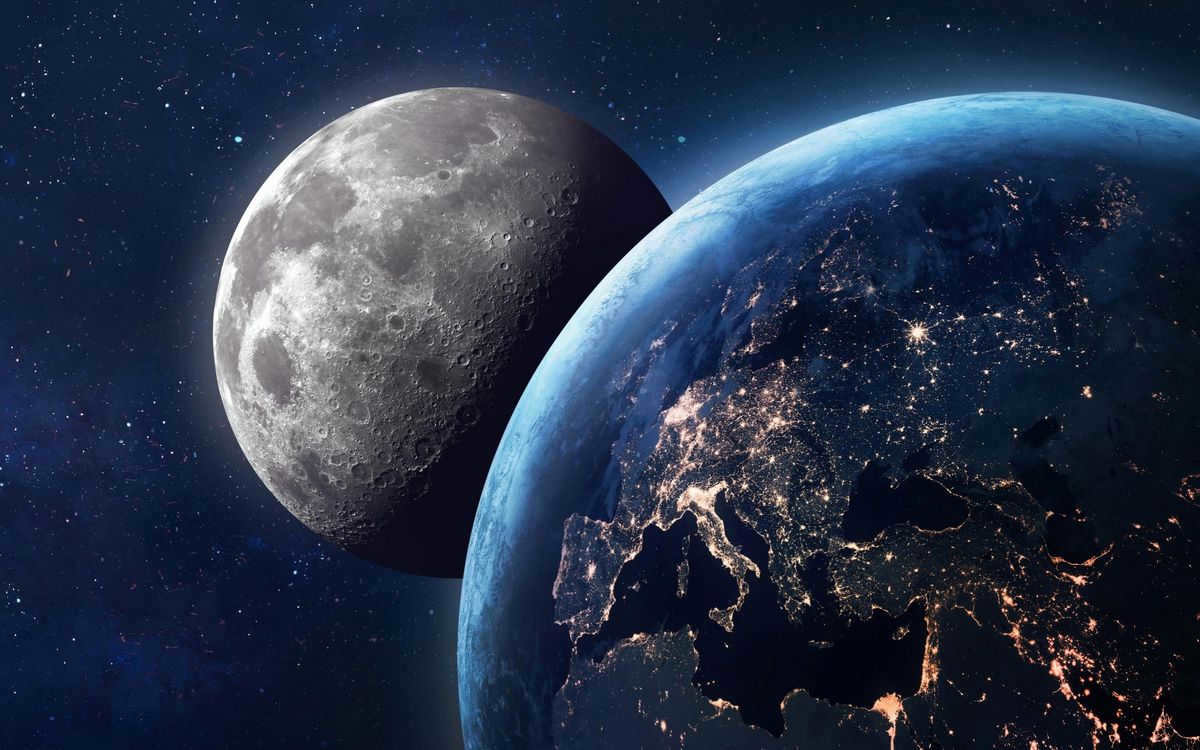
An extraterrestrial planet collided with our planet, causing a massive fragment to break off… This scenario might resemble a science fiction film, but it is believed to be the probable explanation for the formation of the Moon. In this article, we will delve into the most renowned theories regarding the origin of Earth’s natural satellite.
There is still no consensus among scientists regarding the origin of the Moon. It is widely accepted that the Earth’s satellite formed approximately 100 million years after the formation of the solar system [1]. However, the exact process through which it occurred remains unclear. Throughout history, astrophysicists have proposed various theories to explain the Moon’s origin. Prior to the 1970s, three theories, known as the “Big Three,” were widely accepted. However, after the American lunar expeditions of the 1960s and 1970s, a different theory gained recognition and is now widely accepted: most scientists now believe that the Moon was formed as a result of a collision between Earth and another celestial body. In the following paragraphs, we will delve into this theory, discuss the “Big Three” hypotheses, and explore some other intriguing speculations about the Moon’s origins.
1. The collision of Earth with another planet
Based on the hypothesis of a massive collision or impact, it is believed that the Moon was created when a celestial body collided with a young Earth. This theory was initially proposed by American scientists Hartmann and Davis (William K. Hartmann, Dr. Donald R. Davis) in 1975 [2]. Subsequently, the hypothetical object that crashed into Earth was named Theia, after the mother of the Greek lunar goddess Selene [3].
Roughly 4.5 billion years in the past, the Solar System was a tumultuous realm – various celestial objects emerged within it that never developed into fully-formed planets [4]. Among these was Teia, a protoplanet roughly the size of Mars composed of dust and gas clouds [5]. Upon colliding with Earth, Teia expelled some of Earth’s mantle matter into space. Gravity then took over: the ejected debris began to orbit Earth and gradually coalesced into the Moon. As a result of the impact, Earth’s axis of rotation also underwent changes.
A recent simulation by NASA and Durham University presents a new perspective on the formation of the Moon, suggesting that it could have been created in a matter of hours rather than the previously believed months or years. This simulation, which utilized high-resolution technology, revealed previously unseen effects of the collision between a celestial body and the Earth.
However, there are inconsistencies with the collision theory. According to current astronomical models, over 60% of the Moon should be composed of material from the celestial body known as Teia. Yet, rock samples collected during the Apollo missions indicate that the Earth and the Moon have nearly identical compositions. This discrepancy challenges the impact scenario and raises further questions about the Moon’s origins [7].
Multiple collision theory
In 2017, researchers from the Weizmann Institute in Israel put forward an alternative theory of collisions. They suggest that there were multiple impacts on Earth, resulting in the formation of about 20 small moons, which then merged to form the Moon we see today [8]. This theory provides an explanation for the similar composition of lunar rocks and terrestrial rocks, which has been a major counterargument against the idea of a single giant impact.
A similar theory was proposed in 2007 by Russian physicist Nikolay Gorkavy [9]. He referred to it as the “multi-impact” theory, suggesting that the Moon was not formed by a single massive collision, but rather through a series of smaller ones.
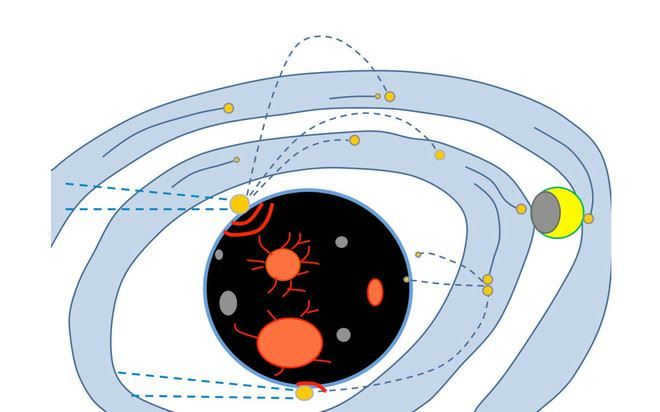
The formation of the Moon is believed to have occurred through the gradual accumulation of asteroids, with estimates suggesting that up to 1 million pieces were involved [10]. While the current number of flying objects in the Solar System does not match this figure, the presence of numerous craters on the Moon’s far side indicates that such impacts were common even billions of years ago.
Although the multi-impact theory offers a better explanation for certain unresolved aspects of the Moon’s formation, it is not widely accepted in Western planetology as the leading theory, which is the giant impact theory.
2. Hypothesis of centrifugal separation
Prior to the U.S. Apollo spacecraft retrieving lunar soil samples from the Moon, there were three prevailing theories regarding the formation of the Moon in the scientific community. The hypothesis of centrifugal separation is one of the prominent theories.
This theory was initially proposed by George Darwin, an English astronomer and mathematician who was the son of Charles Darwin, in 1878. According to Darwin, the Moon was created when a large fragment detached from the rapidly rotating Earth due to the influence of centrifugal forces.
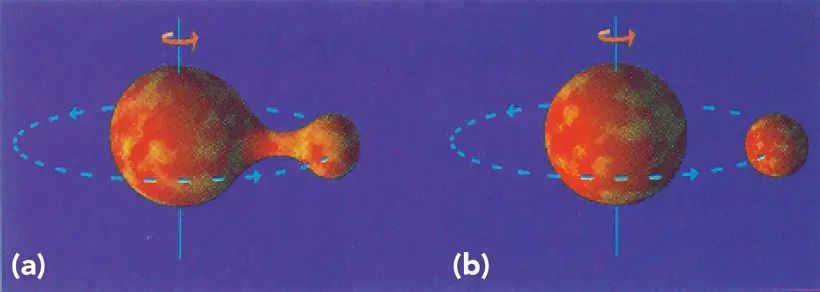
According to the theory of centrifugal separation, the Moon is believed to have originated from a fragment that broke away from the Earth. This separation is thought to have occurred in the area that is now occupied by the Pacific Ocean. (Photo: creation.com)
While this theory gained popularity in the early 20th century, subsequent scientific research has not confirmed its validity [11]. Calculations have shown that the Earth’s speed at that time was not high enough for a piece of such magnitude to have detached. Additionally, if the theory were true, it would be expected that the Moon would orbit around the Earth’s equator, which is not the case.
3- Simultaneous emergence of the Moon and Earth
One more theory known as the “Big Three” proposes that the Moon and Earth were formed at the same time. This hypothesis is considered to be one of the earliest scientific theories regarding the formation of Earth’s satellite, and it was initially proposed by the German philosopher Immanuel Kant in 1785. Kant suggested that both the Moon and Earth originated from gaseous matter, specifically a dust nebula, and are therefore “sister planets” that formed around the same period [12].
At various points in time, this concept garnered support from other astronomers and physicists, including Otto Yulevich Schmidt, a Soviet mathematician and astronomer, as well as his disciples. As per the Soviet theory of coaccretion (derived from the Latin term “assertio” meaning “joining”), a disk akin to Saturn’s current rings gradually materialized around a nascent Earth [13]. This phenomenon was the result of accretion, or the aggregation of solid particles derived from meteorites, dust clouds, and gases. The Earth’s moon was formed from this very disk.
One of the drawbacks of this theory is its failure to provide an explanation for the varying densities of the Moon and the Earth [14]. William Hartmann, a planetary scientist who put forth the idea of a massive collision, expressed skepticism about the possibility of two celestial bodies forming from the same material, yet having different iron core compositions – the Earth with a significant iron core and the Moon with a minimal iron core [15]. Consequently, when lunar soil samples were brought back to Earth and their composition was analyzed, the coaccretion hypothesis was dismissed [16].
The hypothesis of the “Big Three” theory suggests that the Moon was captured by the Earth after it had already formed. This idea was originally proposed by American astronomer Thomas Jefferson Jackson See in 1909 [17]. According to this hypothesis, a celestial body passed by the Earth and was pulled into its orbit by gravitational forces. In this version, the Moon is not a fragment of the Earth or a “sister”, but rather an unexpected “guest” that happened to be in close proximity to the Earth.
It is possible to validate this hypothesis by observing that the planet Mars likely obtained its moons Deimos and Phobos through this mechanism. These moons could be considered as “extraterrestrial” in the sense that they are asteroids, similar to the Moon [18]. Nevertheless, this proposition is not without its flaws: these celestial bodies, often referred to as “extraterrestrial,” frequently exhibit irregular shapes rather than the spherical form characteristic of the Moon. Additionally, their orbits deviate substantially from the circular path currently followed by the Moon.
![If the Moon, accidentally passing near the Earth, was captured by its gravity, one would expect it to move in an elongated orbit around the Earth - as, for example, Halley's Comet moves around the Sun [19]. However, the Moon's orbit is essentially circular. Pictured here is the elongated orbit of the comet compared to the circular orbits of the planets.](/wp-content/uploads/images/luna-chto-takoe_53.jpg)
![If the Moon, by some chance, happened to come close to the Earth, and got caught in its gravitational pull, it would be expected to follow an elliptical path around the Earth - similar to how Halley's Comet orbits the Sun [19]. However, the Moon's orbit is mostly circular. The image demonstrates the elongated orbit of the comet in contrast to the circular orbits of the planets.](/wp-content/uploads/images/luna-chto-takoe_53.jpg)
If the Moon, unintentionally passing in close proximity to the Earth, ended up being influenced by its gravitational force, it would typically follow an elongated orbit around the Earth – similar to the way Halley’s Comet orbits the Sun [19]. However, the Moon’s orbit is primarily circular. The illustration illustrates the elongated orbit of the comet in comparison to the circular orbits of the planets. (Photo: Youtube)
5. The Origin of the Moon through the Accumulation of Small Satellites
The concept, known as the Many-moons Theory, was first proposed by American geophysicist Gordon J. F. MacDonald in 1966. This theory is similar to the capture theory, but with a key distinction – instead of capturing one large celestial body, it suggests that the Earth was able to accumulate multiple smaller celestial bodies. Over time, these smaller bodies would come together to form the Moon [20].
However, the Many-moons Theory fails to explain the remarkable similarity in composition between the Earth and the Moon. Furthermore, it does not address why the accumulation of several moons occurred near the Earth, while Mars and its two small satellites did not experience a similar process.
In 1995, Ernst Julius Öpik, an Estonian astronomer, proposed an intriguing theory about the Moon’s origin. He suggested that during that time, the early Earth was surrounded by rings of trapped rocky debris [21]. These fragments constantly collided with the Earth, causing it to heat up significantly to approximately 2000 °C. As a result, the surface of the Earth underwent vaporization, with lighter elements being carried away by the solar wind, while the heavier elements combined with the rocky debris in the space near Earth to form the protoluna.
This event took place during the later stages of Earth’s formation, after its iron core had already developed. The vaporization, however, occurred in the mantle layer, which contained significantly less iron. Consequently, this hypothesis elucidates the reason behind the Moon possessing a relatively tiny iron-nickel core in comparison to Earth.
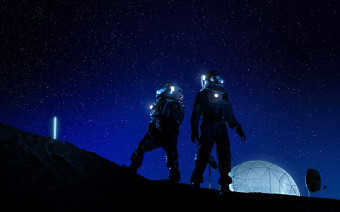
7. The Moon’s Possible Artificial Origin
In the 1960s, a controversial theory emerged suggesting that the Moon was not a natural celestial body, but rather an artificial creation. This idea was supposedly proposed by scientists Mikhail Vasin and Alexander Shcherbakov of the USSR Academy of Sciences.
However, it is now known that no such scientists were affiliated with the Academy of Sciences during that time [22]. In 1968, Komsomolskaya Pravda, a Soviet newspaper, published an article entitled “Is the Moon an Artificial Satellite?” but it was written by journalists, not academics. This article was later translated into English and circulated internationally.
There have been various exotic theories in Western culture ever since the Apollo 12 mission to the Moon in 1969 [23]. One such theory suggests that the Moon is actually an alien spaceship, while another claims that the Moon is hollow on the inside. Both of these ideas, however, are now considered to be anti-scientific.
According to Anton Biryukov, a candidate of physical and mathematical sciences and senior researcher at the State Astronomical Institute named after P.K. Sternberg Moscow State University, the theory that finds the most support among researchers is the impact theory. There are at least two reasons why this theory is favored:
- It has long been recognized that the Earth-Moon system belongs to a relatively rare category of close pairs of celestial bodies. Some even refer to them as “double planets”. The Moon is incredibly close to the Earth in comparison to the Earth’s own radius. Additionally, it has a comparable mass and size to the Earth. It would be challenging to create such a stable system for billions of years solely through gravitational capture.
- Another significant fact: recent studies have revealed that the isotopic makeup of the Moon bears a striking resemblance to that of the Earth, even more so than comets or Mars meteorites.
Consequently, contemporary researchers concur that the Moon was created through a collision between our nascent planet and another celestial body, roughly the size of Mars. This event caused a portion of the Earth’s material to be flung into orbit, eventually forming our satellite.

The Solar System
Unlike Mercury and Venus, our planet has a unique and natural satellite called the Moon. This celestial object plays a crucial role in influencing the various processes that take place on Earth. Consequently, it is only natural that earthlings have a keen interest in studying it.
The Composition of the Moon
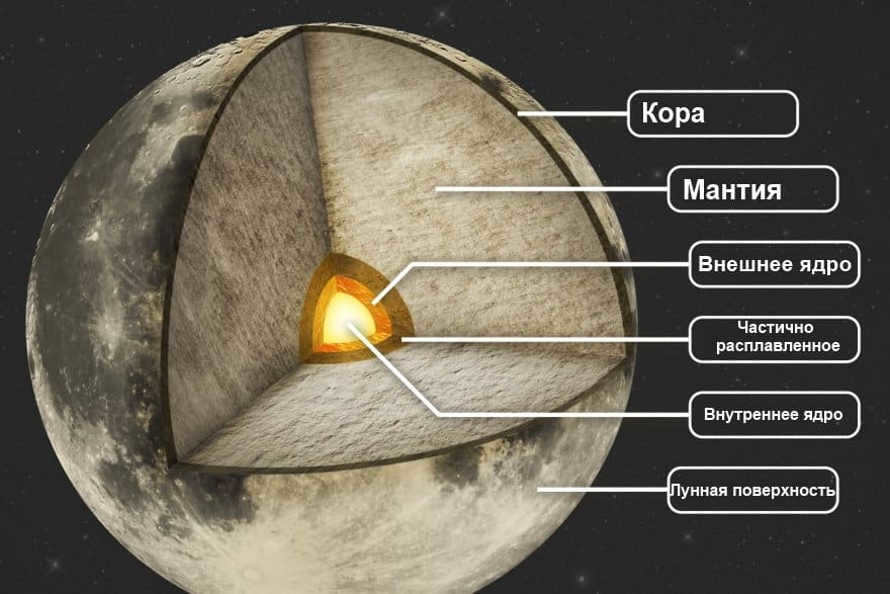
According to the principles of astronomical geology, the internal composition of the Moon adheres to a typical structure. It consists of a central core, which has a diameter of approximately 1500 km. The core is composed of a solid inner region with a radius of 240 km, surrounded by a liquid outer layer that is approximately 300 km thick. The primary component found within the core is iron.
Encircling the core is the mantle, which is approximately 1000 km thick and composed of magnesium, iron, and silicon oxides. Finally, the Moon’s outermost layer is the crust, which has a thickness of about 50 km. This crust is covered by a layer of lunar soil known as “regolith,” which is a porous material with a gray appearance.
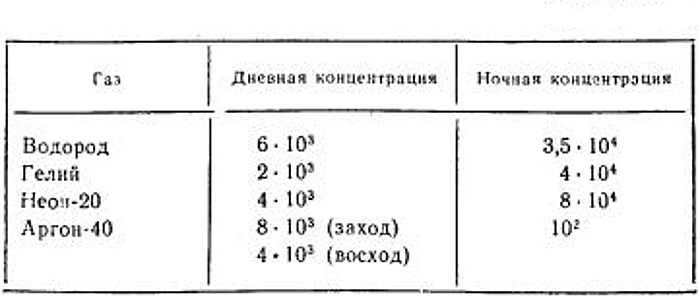
The Moon’s exosphere is comprised of a delicate mixture of gases, including argon, nitrogen, helium, neon, hydrogen, methane, ammonia, and carbon dioxide. In comparison to the Earth’s atmosphere, the density of these gases is ten trillion times lower. As a result, the temperature on the Moon can fluctuate between – 15Z°C and +107°C.
What is responsible for the creation of the atmosphere on the Moon?
- The regolith interacts vigorously with the solar wind, resulting in the formation of the atmosphere.
- Meteorites carry frozen gases and possess immense kinetic energy, contributing to the atmosphere’s composition.
Surface conditions
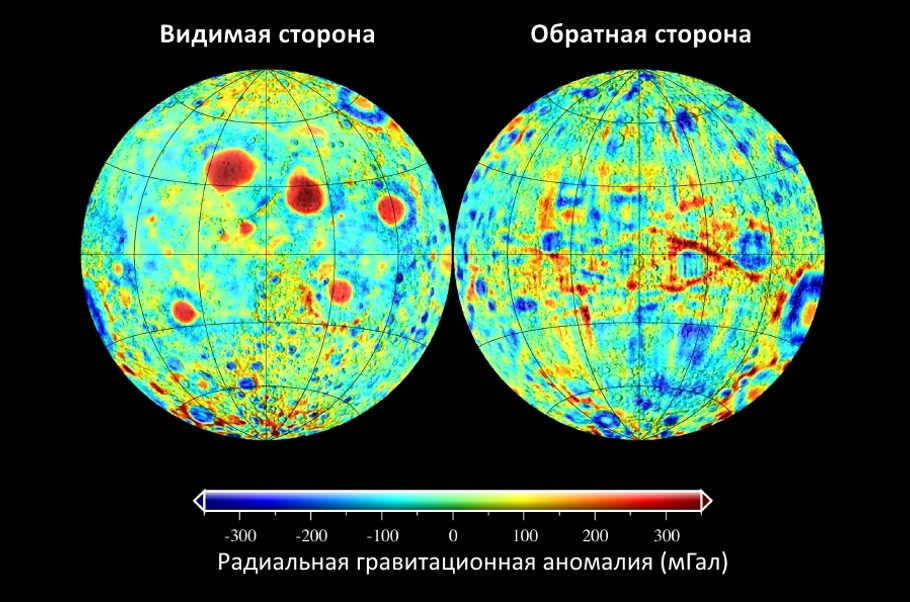

The gravitational pull of the Moon is six times less powerful compared to that of Earth, which is why it is unable to retain its own atmosphere. In 2011, a duo of American satellites embarked on a mission to examine the gravitational field of our planet’s natural satellite. The findings were quite intriguing, revealing a multitude of anomalies. The cause behind this peculiar phenomenon remains unknown and warrants further investigation.
Throughout history, astronomers have consistently focused their attention on the nearest celestial body. This has been the case since ancient times and continues to this day. In fact, even our early ancestors were able to make surprisingly accurate calculations regarding the size and distance of the Moon in relation to the Earth.
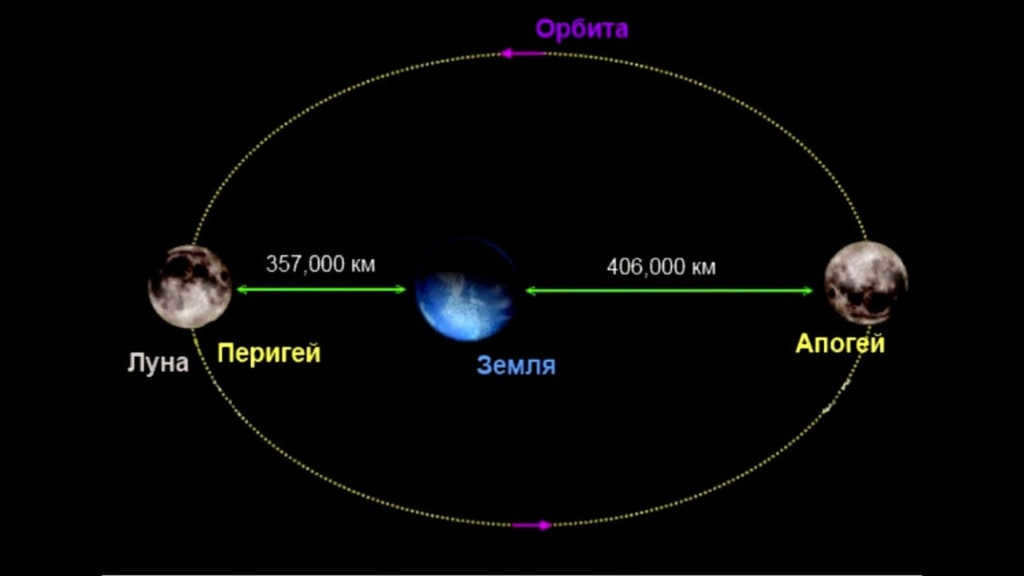
In the third century BC, the renowned Greek scientist Aristarchus of Samos made a groundbreaking discovery by calculating the distance between the Earth and the Moon. He determined that this distance was equivalent to 60 times the radius of our planet (more specifically, it ranged from 55 to 63 radii).
A hundred years later, Hipparchus, another ancient Greek astronomer, further studied the Moon’s orbit. Through analyzing three lunar eclipses, he was able to validate the theories proposed by celestial observers from the ancient Babylonian school.
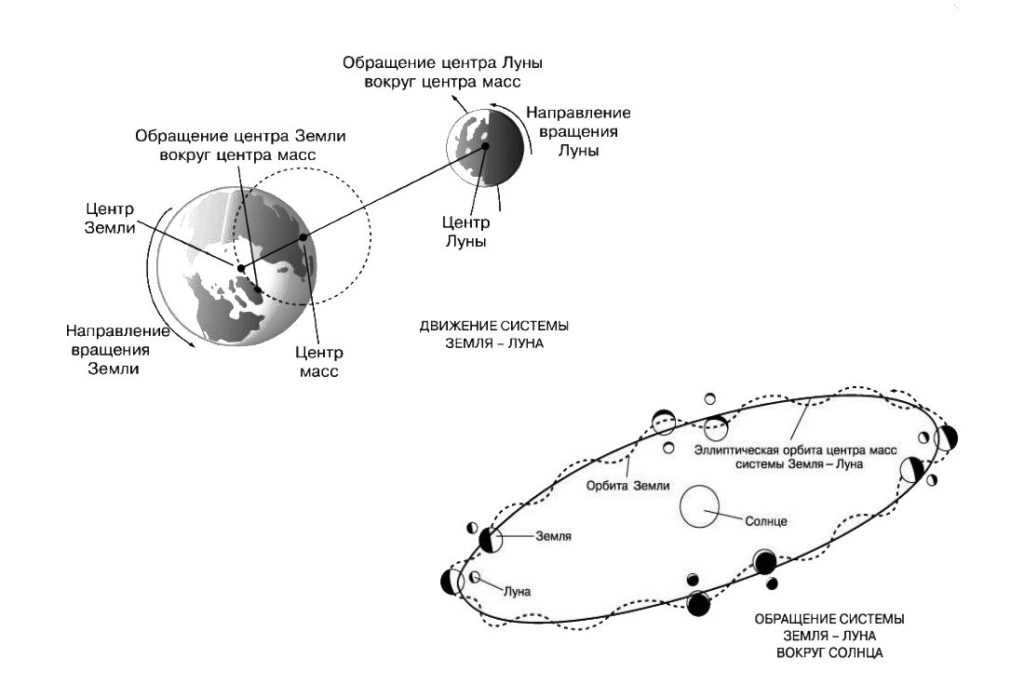
The Moon orbits the Earth in an elliptical path with an eccentricity of 0.0549. The distance between them varies between 364397 km and 406748 km. Because of the phenomenon known as “tidal acceleration,” the Moon is gradually moving away from the Earth at a rate of 38 mm per year.
The synchronization of the Moon’s orbit around our planet and its own rotation is truly fascinating. Both cycles have a duration of 27.32166 Earth days. This is why we can only observe one side of the “night luminary.”
The Moon’s orbital motion is actually quite intricate and is impacted by numerous factors. Ernest Brown, a renowned British astronomer, successfully incorporated these factors into his calculations in 1919 with remarkable precision. His calculations continue to be utilized today, although some adjustments have been made through computer analysis conducted during space exploration.
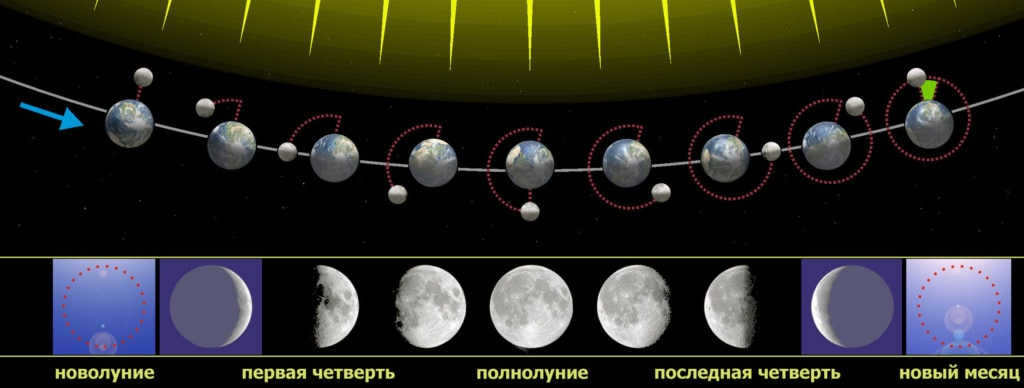
During the process of rotation, the level of sunlight that illuminates the Moon goes through various changes, resulting in what we commonly refer to as the “phases” of the Moon. There are four main phases:
- New Moon – During this phase, the Moon is not visible.
- First quarter – In this phase, half of the Moon is illuminated. In the Northern Hemisphere, it is visible on the right side, while in the Southern Hemisphere, it is visible on the left side.
- Full Moon – During this phase, the entire surface of the Moon is visible.
- Last quarter – This phase is similar to the first quarter, but this time, the other half of the Moon is illuminated.
Each stage has a duration of 7.4 days, and collectively they span from 29.25 to 29.83 days. This phenomenon can be attributed to the Moon’s elliptical orbit, which deviates from a perfect circle. The initial two stages are often known as the Moon’s “rising” phase, while the subsequent two stages are referred to as its “waning” phase.
Super Moon
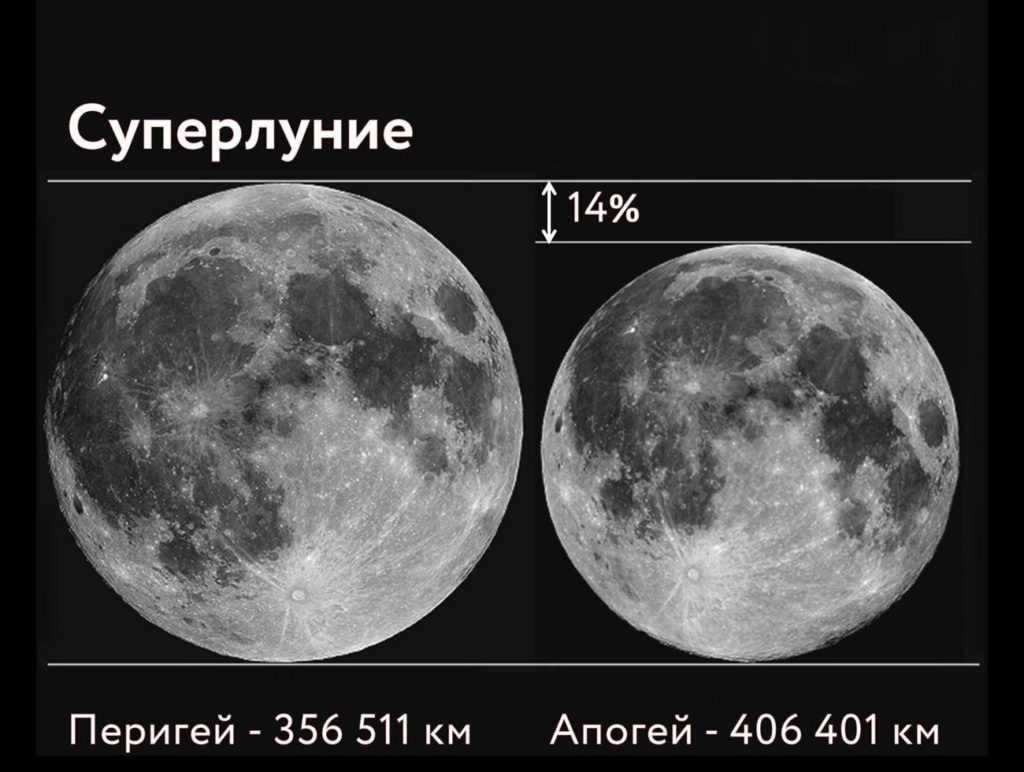
Occasionally, when two celestial events coincide: a full moon or new moon with the precise moment of the Moon’s closest approach to the Earth, a super moon occurs. The satellite appears to be 14% larger in diameter than its usual size.
Communication with Planet Earth
The interaction between two adjacent celestial objects of immense mass results in the formation of tides. This phenomenon not only causes a rise in sea level, but also affects the elevation of the Earth’s surface. While the highest point of the tidal wave on our planet can reach up to 18 meters, on its moon the fluctuations are limited to just a few centimeters.
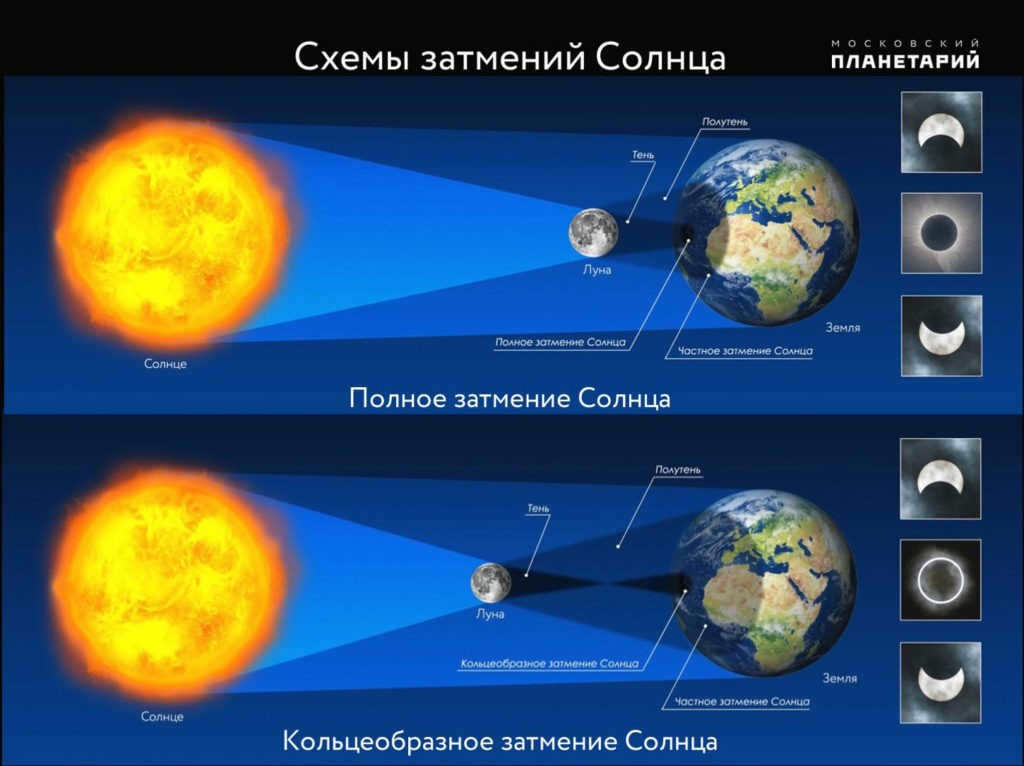
When the Sun, Earth, and Moon align, it results in the formation of eclipses. This phenomenon involves the obscuring of the observed object’s surface either by the shadow cast by the moving body (the Moon blocking the Sun) or by the moving body itself (the Earth obstructing the Moon).
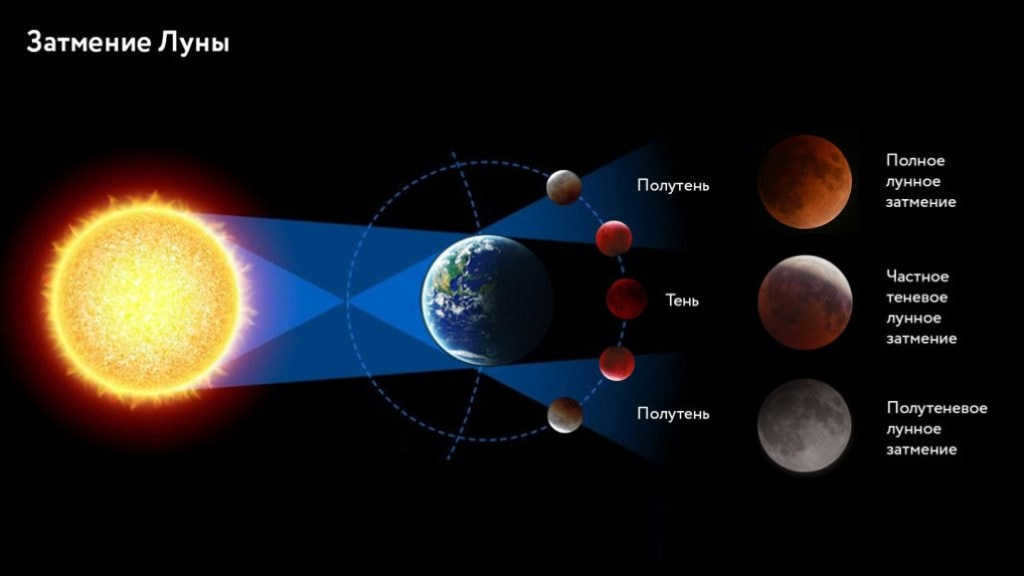
When the Moon is engulfed by the Earth’s shadow, a lunar eclipse occurs. There are various types of eclipses:
- Total eclipse – The entire surface of the satellite is completely shrouded in the Earth’s shadow. During this phenomenon, the Moon takes on a dark red hue.
- Partial eclipse – The shadow partially covers the satellite.
- Penumbral eclipse – There is a region of penumbra surrounding the Earth’s shadow cone. In this case, it covers the Moon.
The Impact of the Moon on Planet Earth
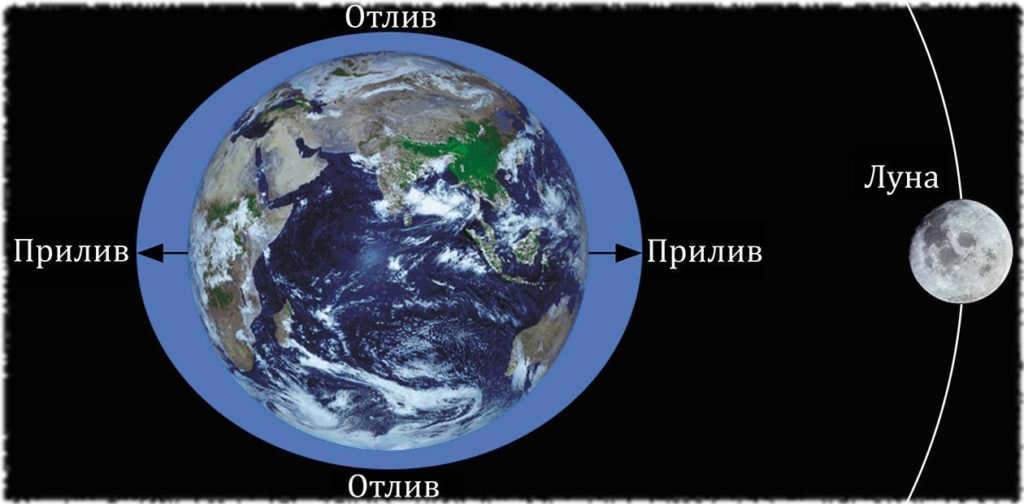
The gravitational forces of the Moon create the phenomenon of sea tides. The Earth is mostly covered by oceans, and the Moon’s gravity causes the water on opposite sides of the planet to rise, creating high tides, while the water on the remaining sides falls, creating low tides.
Within a 24-hour period, a tidal wave travels around the globe, resulting in two sets of tides. The highest recorded tidal rise, reaching up to 18 meters, occurs in the Bay of Fundy, located on the coast of Canada. Interestingly, this phenomenon is not as noticeable in Russia due to the country’s distance from the ocean and the enclosed nature of the Baltic, Black, and Caspian seas.
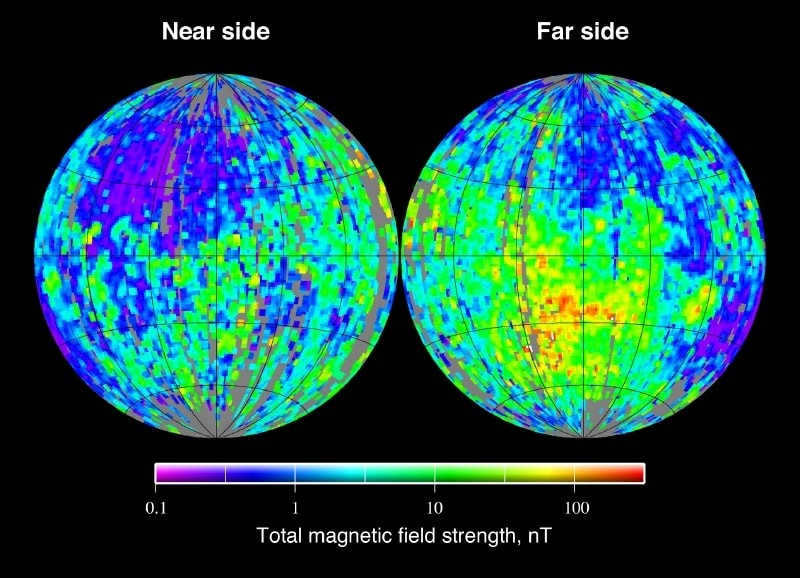
One of the peculiarities of the lunar body is the lack of magnetic poles. While there are local magnetic fields of varying nature, they are too weak to be detected on a cosmic scale.
The magnetic field history of the Moon has been revealed through the U.S. Apollo space missions, which brought back samples of moon rocks. It has been discovered that billions of years ago, the Moon possessed a magnetic field that was twice as powerful as Earth’s. As the Moon gradually moved away from Earth, the gravitational forces were no longer able to churn the liquid core, causing it to solidify. Consequently, the generation of magnetic fields diminished over time. This is why a compass on the Moon cannot determine the cardinal directions.
The Influence of the Moon on its Surroundings
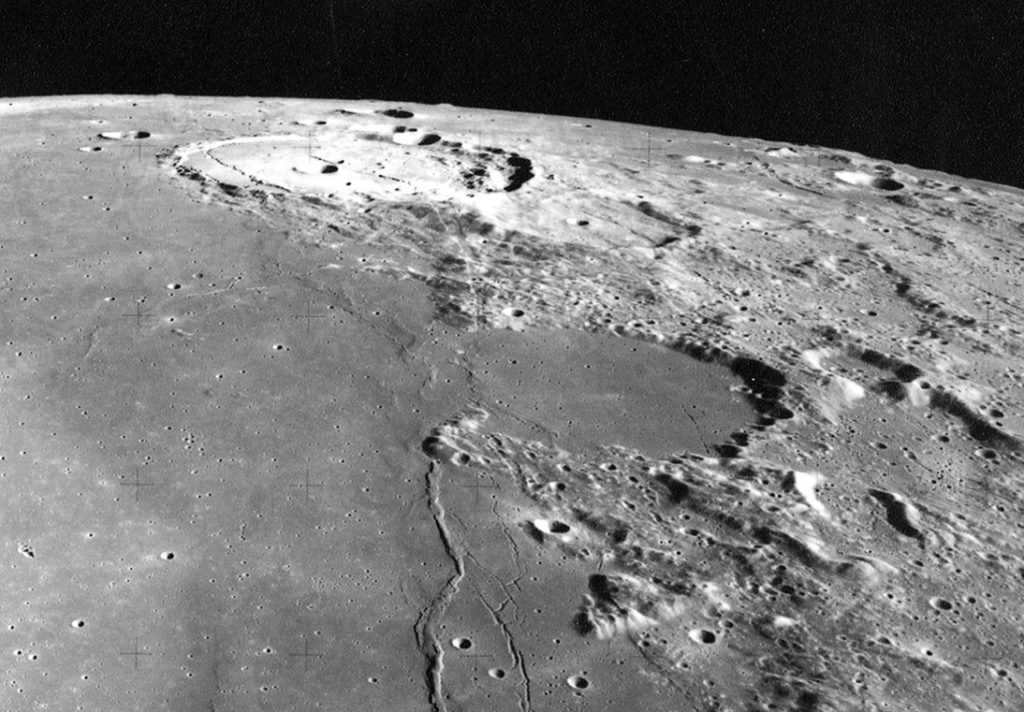
When studying the Moon, curious researchers often find themselves pondering the question: what substances fall onto the Moon, and what substances escape from its surface and venture into outer space? As a satellite of the Earth in the solar system, the Moon remains exposed to the external environment due to its lack of atmosphere. This exposure leads to a continuous “bombardment” of the Moon:
A tremendous influx of charged particles either pierces through the lunar soil or bounces off its surface. Upon impact with primary particles, the lunar soil generates secondary particles, thus triggering a chain reaction. Neutrons and gamma rays escape from the Moon as a result of being attacked by their “progenitors”.
Did you know? Dust particles on the Moon’s surface create aerosol clouds that can interfere with the flow of cosmic energy. The lunar surface is a fascinating world of dust and electrostatic phenomena.
The Study of the Moon
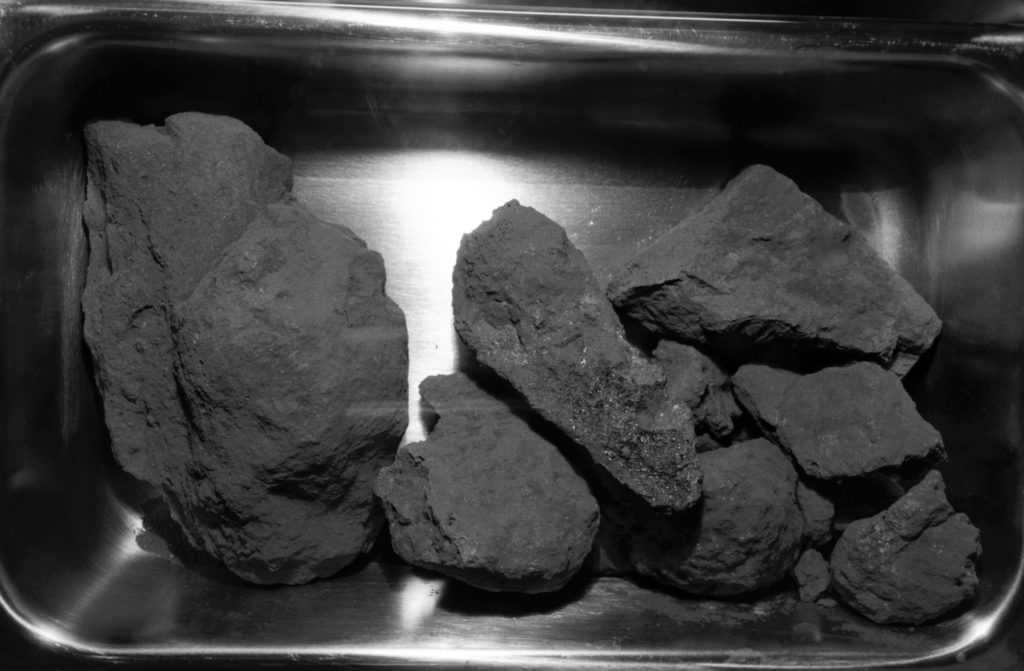
The field of scientific research that focuses on the mineral structure of the Moon is known as Selenology (derived from the Greek word Selene, meaning Moon). With the advent of space missions, scientists have been able to study the Moon’s lithosphere and analyze soil samples collected from its surface. Additionally, around 150 lunar meteorites have been discovered on Earth, their authenticity confirmed through laboratory analysis.
Despite extensive studies on the chemical composition of lunar minerals, selenologists have yet to fully understand the origin of our satellite. Many physical characteristics of the Moon do not conform to traditional astronomical theories, leading to numerous speculative hypotheses:
- The Moon’s formation through the capture of a passing celestial object by the gravitational forces of the solar system and Earth itself.
- Breaking up of a solitary mass into two parts.
- The downfall of the legendary (and possibly real) Phaeton with the appearance of the asteroid belt and the Moon.
- The presence of two planetary systems.
- The interior of the Moon is empty! However, that is not entirely true.
And supporting these hypotheses are esteemed scientists, presenting their perspectives with rigorous scientific calculations.
Moon Caverns
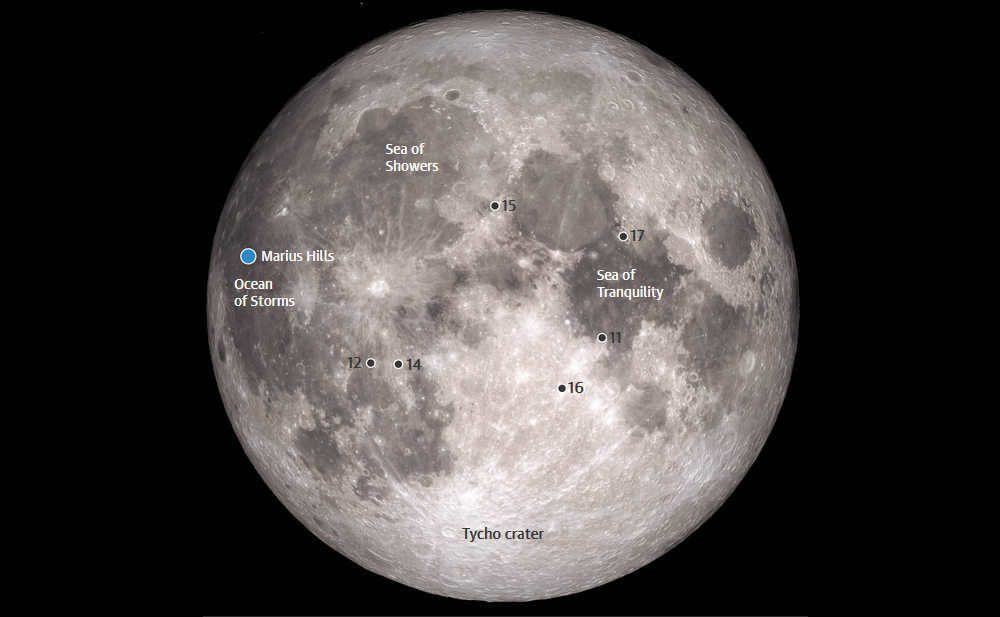

The quest to conquer outer space is a driving force behind human civilization. One of our immediate goals is to colonize nearby celestial bodies. However, the living and working conditions on these bodies are far from comfortable or hospitable.
One major challenge is creating habitable shelters. Thankfully, the recent discovery of a lava tube, a massive cave with a stable geological structure, by the Japanese space probe Kaguya offers hope for a viable solution. Moreover, previous lunar surface photographs have documented the existence of so-called “burrows.” Subsequent investigations have confirmed the presence of vast cavities or voids within the moon.
The Presence of Water on the Moon
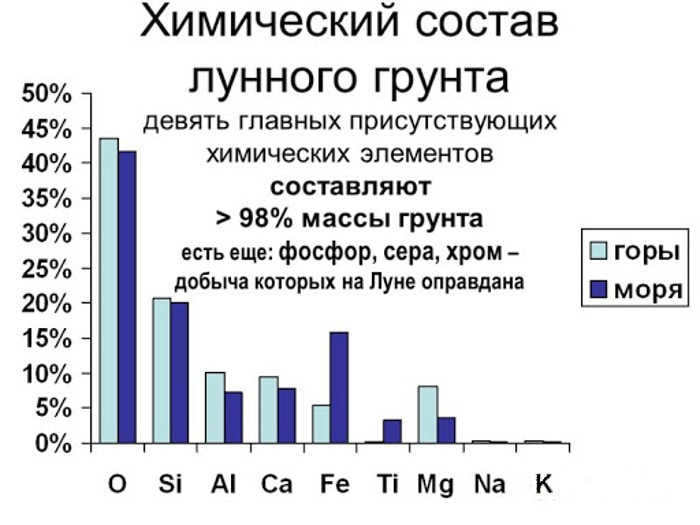
The precise chemical makeup of the Moon remains to be determined. Currently, there have been soil samples collected by Luna-16 and Luna-20 from various regions of the satellite, including the marine and mainland areas. These samples exhibit significant differences, but overall, the lunar regolith is composed of silicon, aluminum, iron, magnesium, calcium, and several other minerals.
The soil also contains abundant oxygen, but minimal amounts of water. This supports the chemical profile of our celestial neighbor.
Selenography
Selenography is the study of the moon’s surface. It involves the examination and mapping of the moon’s features and formations. Selenography is an important field of study for astronomers and scientists who are interested in understanding the moon’s geology and history. By studying the moon’s surface, scientists can learn more about its formation and development over time. Selenography also plays a crucial role in space exploration, as it helps scientists identify potential landing sites for future missions to the moon.
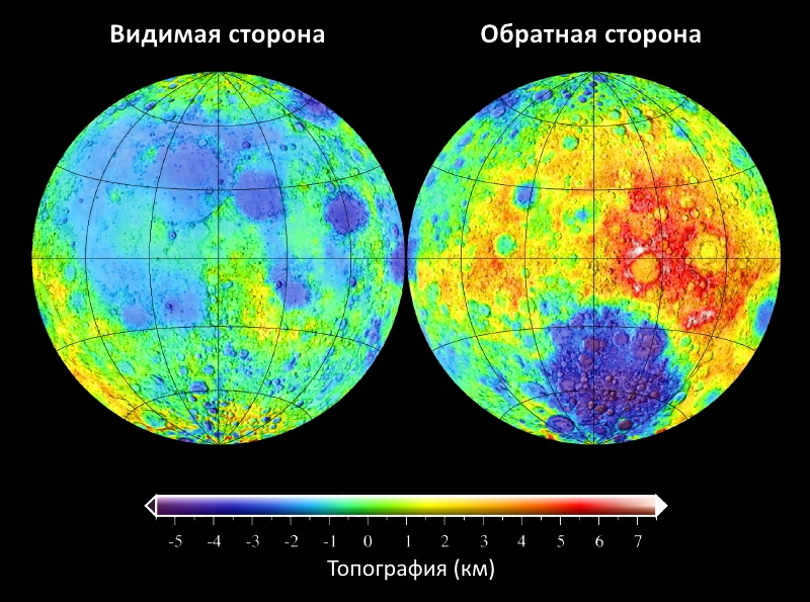

In the early 17th century, Galileo Galilei used a telescope to observe the Moon’s surface. This marked the beginning of Selenology, the scientific study of the relief and composition of Earth’s natural satellite. Other notable astronomers, such as Christopher Scheiner, Jan Hevelius, and Giovanni Riccioli, also contributed to the field. Their collective efforts resulted in the creation of the first lunar maps and the writing of books that laid the groundwork for the classification of surface features on the Moon.
What caused the formation of numerous “round marks” on the Moon’s surface, causing a rift within the scientific community? Was it the result of volcanic activity or meteorite impacts?
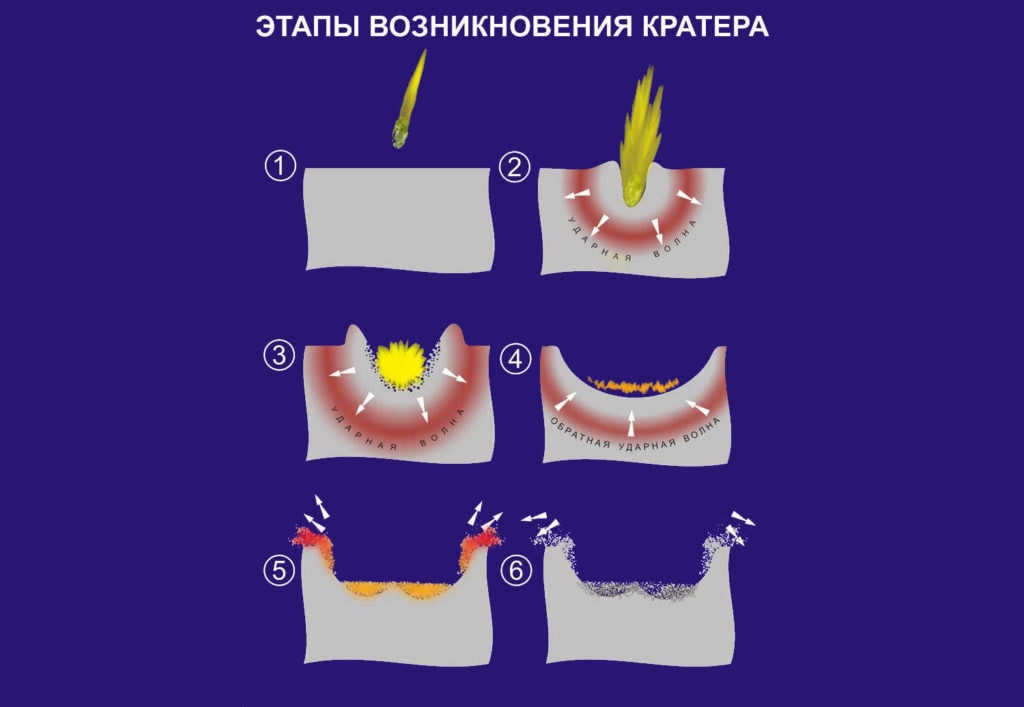

Supporters of the first hypothesis used the circular shape of the crater as evidence, claiming that an ellipse should have been formed due to the impact. However, their arguments were disproven when physicist Charles Gifford from New Zealand modeled the process. Kirill Stanyukovich, a young student from the USSR, assisted Gifford in further theoretical explanations of this phenomenon. It is no surprise that Stanyukovich went on to become a distinguished scientist and academician, known as the originator of the “Explosion Theory”.
The conclusion was reached through research carried out using spacecraft on the Moon and other neighboring planets. The cause of the numerous circular marks on the surface of our natural satellite are meteorites.
The Moon’s “Seas” and “Continents”
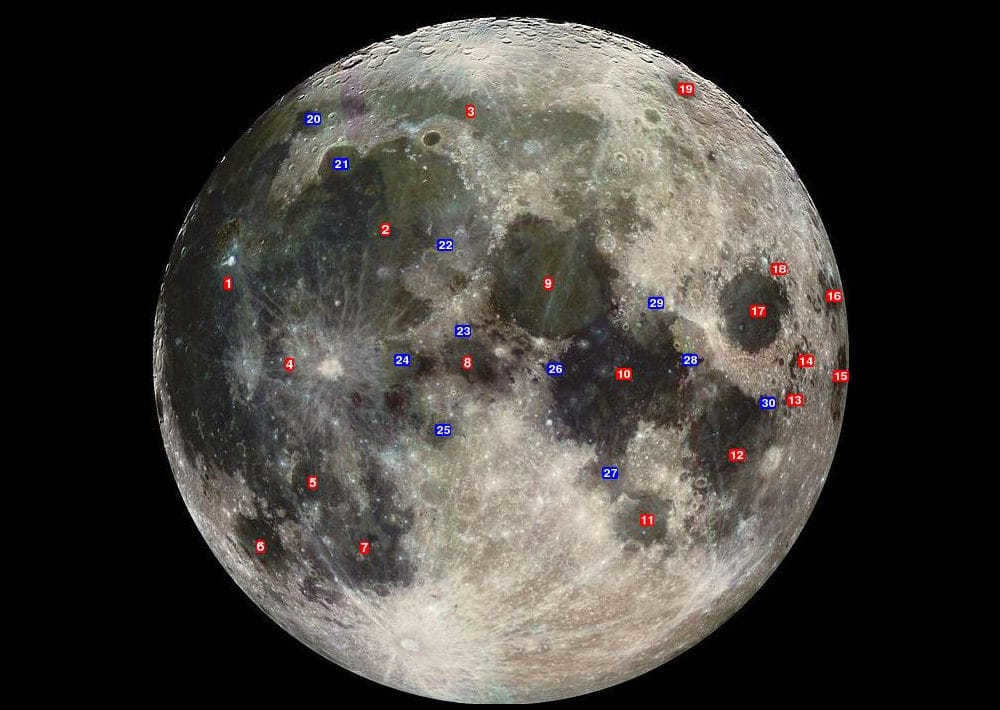
Did you know?: There are only 2 seas and 3 lakes on the far side of the Moon, which are much smaller than those on the near side.
The opposite of the lunar seas are known as “continents”. These continents are light in color, have mountains, and cover more than 4/5 of the surface of the moon. They are also home to a large number of craters and are primarily located on the far side of the moon.
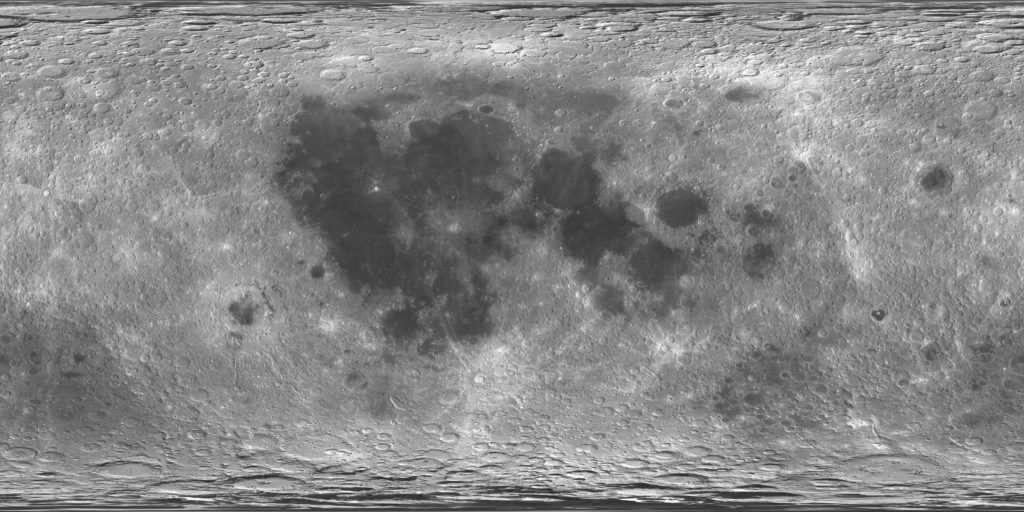
The act of drawing the surface of the Moon on a piece of paper or any other makeshift material is open to anyone, but it was the English explorer William Gilbert who took the initiative to do so in 1603. As of now, no previous instances of such illustrations from an earlier era have been unearthed.
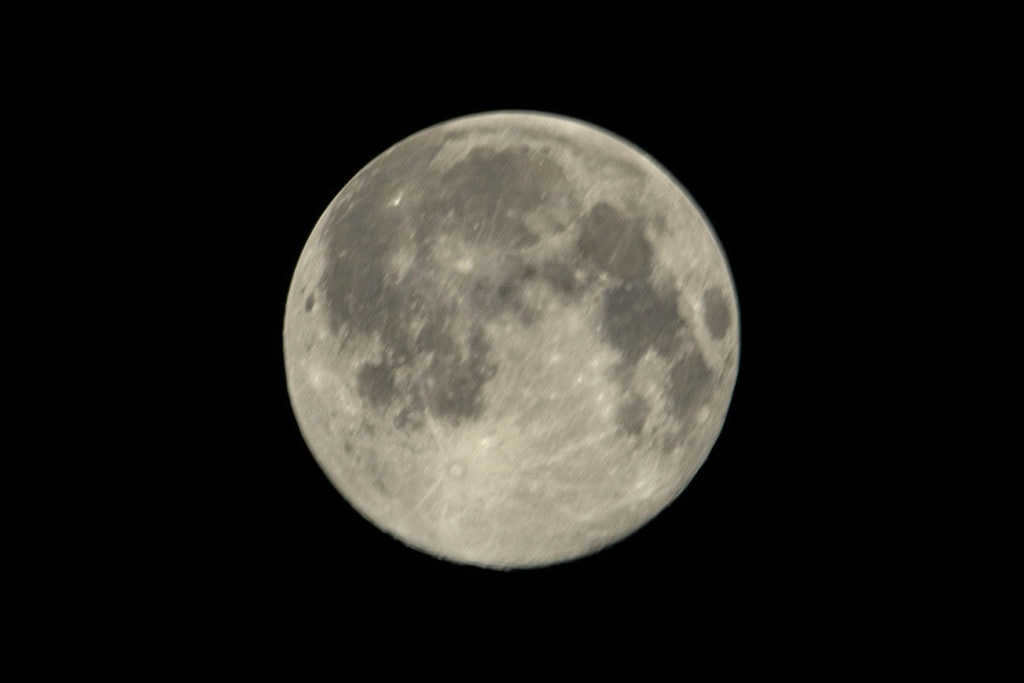
Tobias Meyer, a German astronomer, was the first person to create a lunar map over a century and a half ago. This became possible due to the invention of the first telescopes. As time passed, science made significant progress, utilizing advanced research tools like spacecraft.
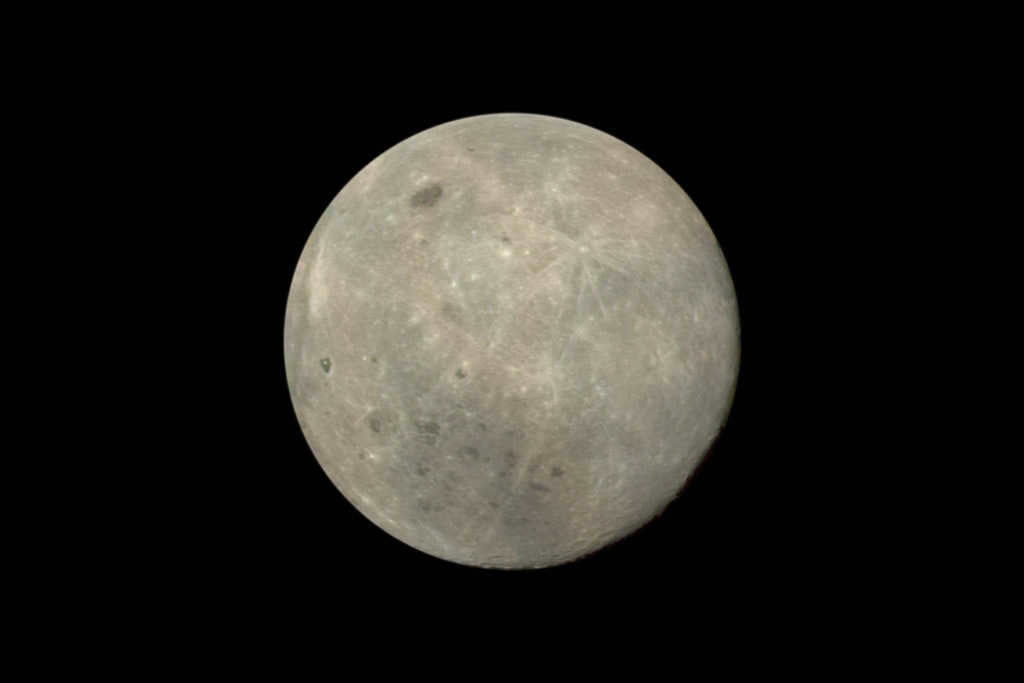
As of now, modern astronomy identifies 14 different types of terrain on Earth’s natural satellite:
- Swamp – A low-lying area that is lighter in color compared to the surrounding sea.
- Ridge – A shallow and narrow depression.
- Mountains – Elevated masses of land.
- Plateau – A shapeless linear elevation.
- Valley – A flat surface with a winding shape.
- Bay – A body of water that extends into the land.
- Crater – A depression in the shape of a ring, with a raised edge.
- Sea – A deep and dark lowland.
- Promontory – A protruding part of the mainland that extends into the sea.
- Lake – a small body of water surrounded by land.
- Ocean – a large body of saltwater.
- Plain – a flat and low-lying area of land.
- Escarpment – a steep cliff or slope.
- Chain – a series of connected craters.
In the 21st century, modern researchers have the advantage of utilizing the advancements in selenography. There is now a three-dimensional relief map of the Moon available on the internet.
Throughout the duration of our exploration of our lunar companion, numerous remarkable and extraordinary suppositions regarding the genesis of the Moon have arisen. Each of these suppositions presented a multitude of evidence both in favor and against.
Recently, the hypothesis suggesting a colossal collision between our planet and a celestial entity, hypothetically named Teia, with dimensions comparable to Mars, has gained prominence. This collision resulted in the expulsion of matter into the Moon’s current orbit.
A year ago, Japanese researchers provided a significant clarification, stating that the expelled matter consisted of magma, which was once enveloping the Earth’s surface. We must now await the presentation of concrete evidence to support this claim.
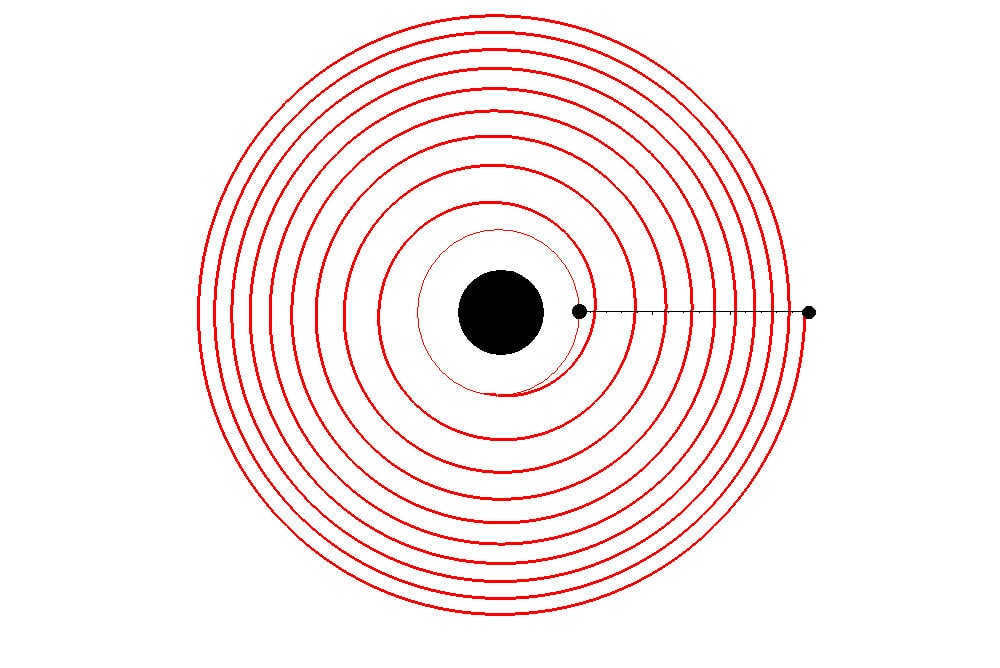
Investigation
Throughout history, the Moon has captivated the curiosity of scientists and astronomers due to its close proximity. From ancient times until now, inquisitive researchers have dedicated their time to studying this celestial body. Initially, observations were made with the naked eye, but as technology advanced, telescopes and spacecraft were utilized to gain a deeper understanding.
Space vehicles
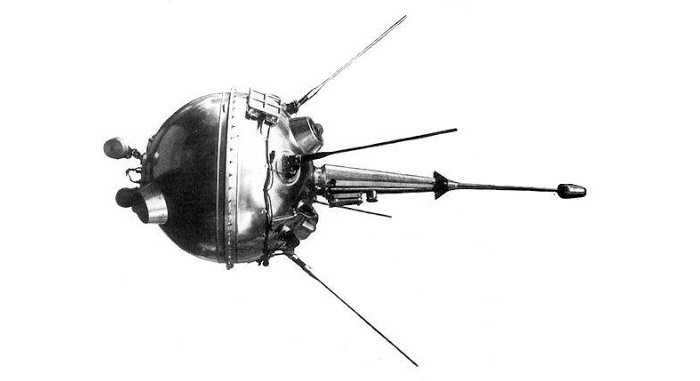
The Soviet Union was the trailblazer in the realm of space exploration. In 1959, the missions “Luna-1, -2, -3” orbited the satellite, touched down on its surface, and even captured images of the far side of the Moon.
By the beginning of the 1970s, the United States took on the challenge of landing the first human on the Moon. Preliminary research was conducted using space stations to evaluate the feasibility of such an endeavor. Photography, examination of the lunar surface, analysis of anomalous phenomena – everything was undertaken in order to ensure the success of the upcoming mission.
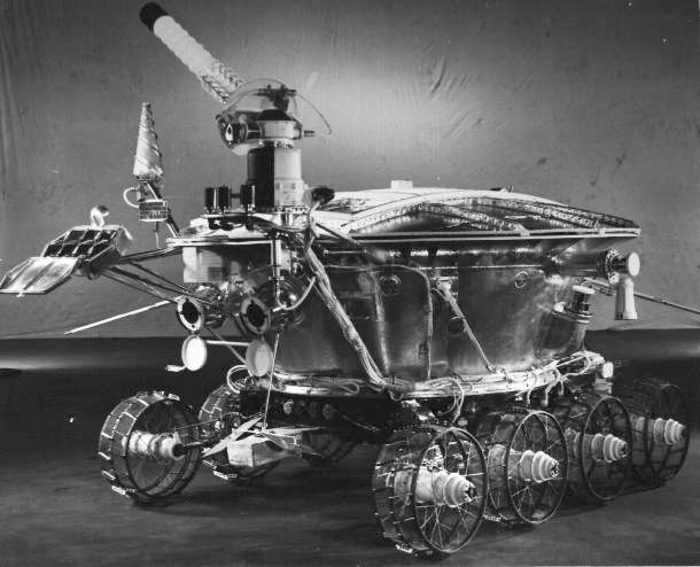
The Soviet Union was at the forefront of developing radio-controlled mobile vehicles. The USSR pioneered the creation of “Lunokhod-1” and “Lunokhod-2”, which effectively explored the moon’s surface in 1970 and 1973. While there were other vehicles, various factors prevented their missions from taking place or resulted in their failure.
USA
In a bid to increase opportunities for American astronauts on the moon, Boeing has collaborated with General Motors to manufacture four lunar vehicles. Operating at a speed of 13 km/h on the lunar surface, these vehicles greatly enhanced the capabilities of the Appolon-15, -16, and -17 missions. The total distance covered by the “lunomobiles” was 91 km, with the farthest point from the base being 7.6 km.
China
China became the third country to successfully deploy a mobile unit on an Earth satellite. In 2013 and 2019, China’s Yuitu and Yuitu-2 lunar rovers took over the reins of radio-controlled lunar rovers, continuing the legacy of exploration.
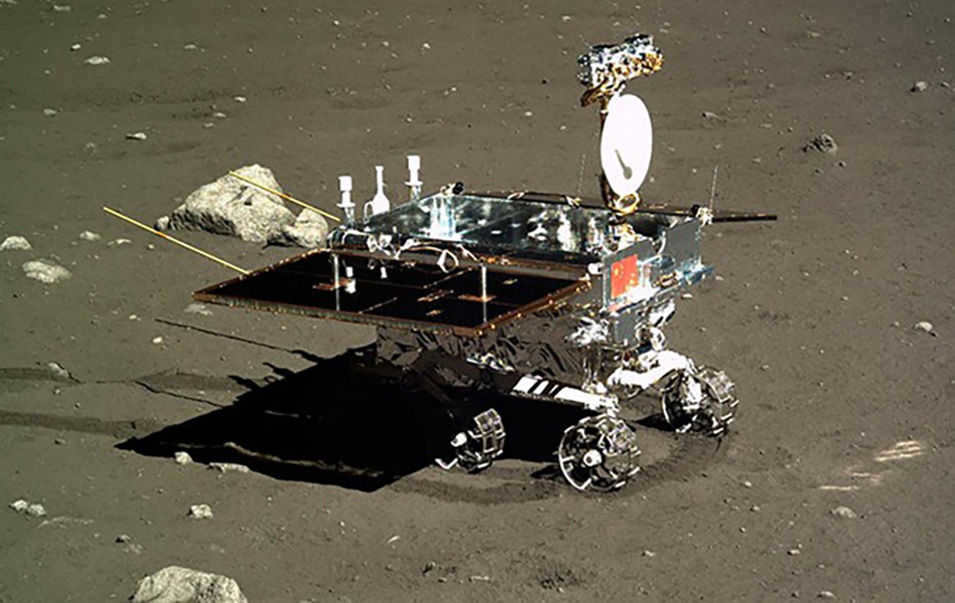
Did you know?: During China’s space exploration initiative, they conducted spectrometric analysis of the lunar soil and discovered a unique chemical composition. Additionally, they also conducted experiments to grow Earth crops in a lunar environment.
The Moon holds great potential for exploration and settlement, making its study a growing priority. Various Asian countries and the European Union have launched their own space satellites to investigate the Moon.
In addition to government entities, private companies have also begun to delve into lunar research with hopes of future development. The Google Lunar X PRIZE competition, which aimed to create a mini-lunar rover, provided a significant incentive for their endeavors. One of the participants in this competition was a team from Russia.
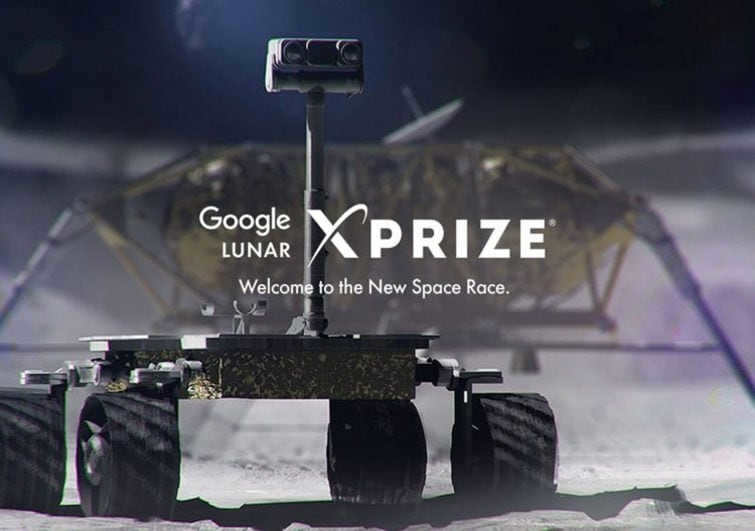
Equally attractive is the proposition put forth by Bigelow Aerospace for space travel. Enthusiastic space travelers are envisioning a journey to orbit the Moon, utilizing either refurbished and modernized spacecraft or innovative, reusable multi-purpose vehicles.
International legal status
The jurisdictional matters regarding the development of the Earth’s satellite are codified in two international agreements:
- The “Treaty on Principles of Operation…” of 1967.
- The “Agreement on the Activities of States…” within the UN of December 18, 1979.
Settling New Lands
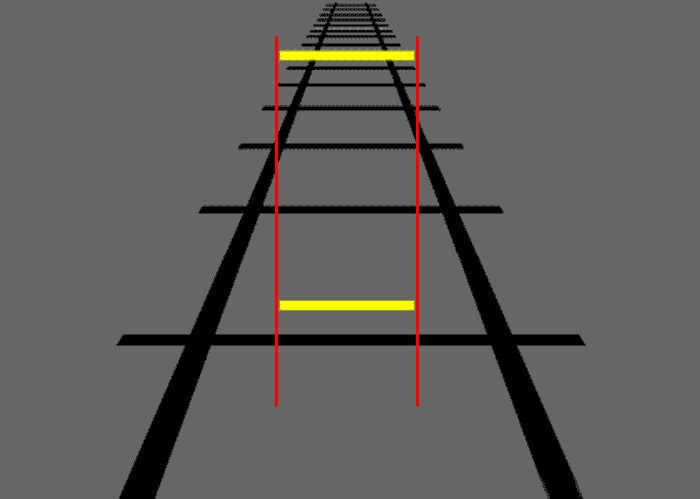
Throughout history, people have observed that the Moon appears bigger when it is closer to the horizon compared to when it is high in the sky. However, this is simply an optical illusion. The size of the Moon remains the same, and in fact, its angular size even appears to increase as it reaches the zenith.
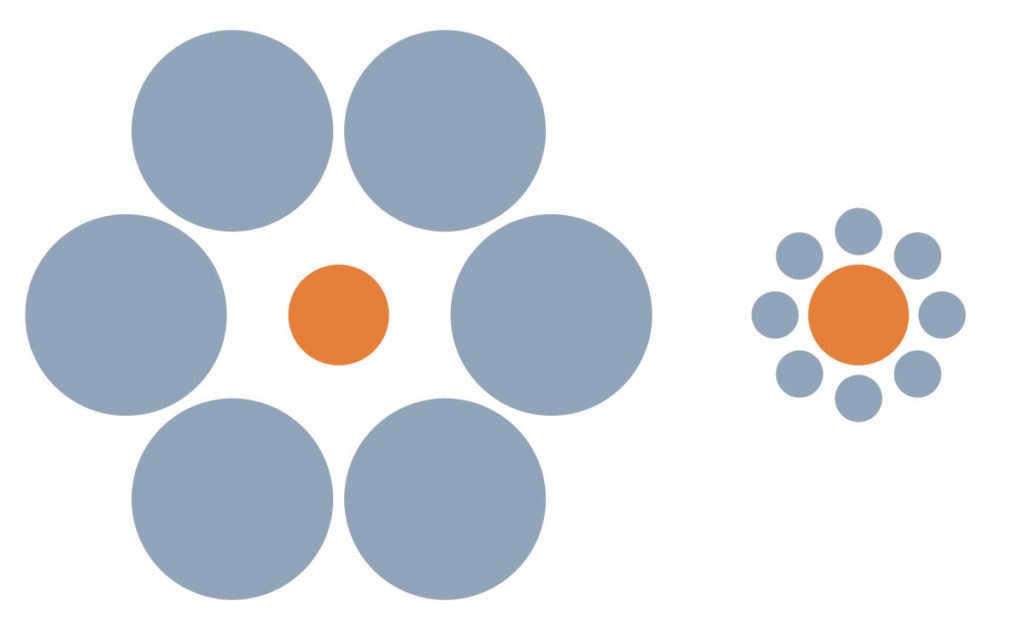
Despite numerous speculations, the precise causes of the optical illusion have yet to be determined.
Momentary occurrences
LOM, or short-term lunar phenomena, refers to periodically happening optical anomalies on the surface of the nocturnal luminescence. These include various types of flashes, auroras, opacities, alterations in size and appearance of the observed entity, and instances of their movement.
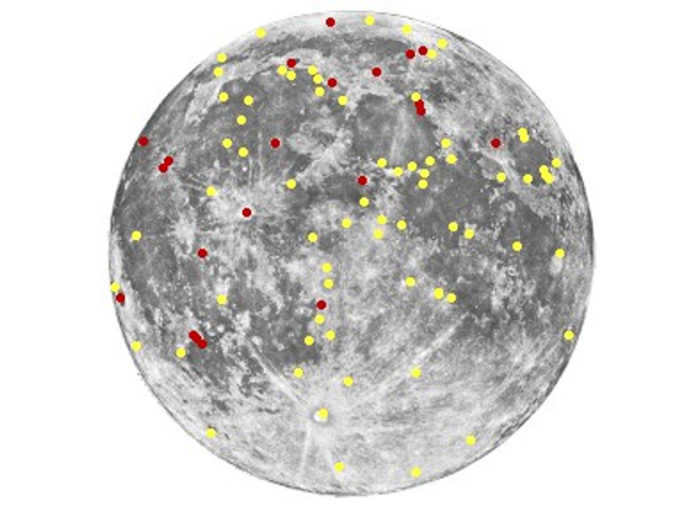
The origin of these phenomena remains uncertain. There are various possible explanations for these events:
- Gas escaping from the lunar surface.
- Seismic activity.
- Interactions with light and electromagnetic waves.
- Electrical processes accompanied by luminous effects.
- Chemical reactions occurring in the lunar soil.
The Moon’s Depiction in Culture and Mythology
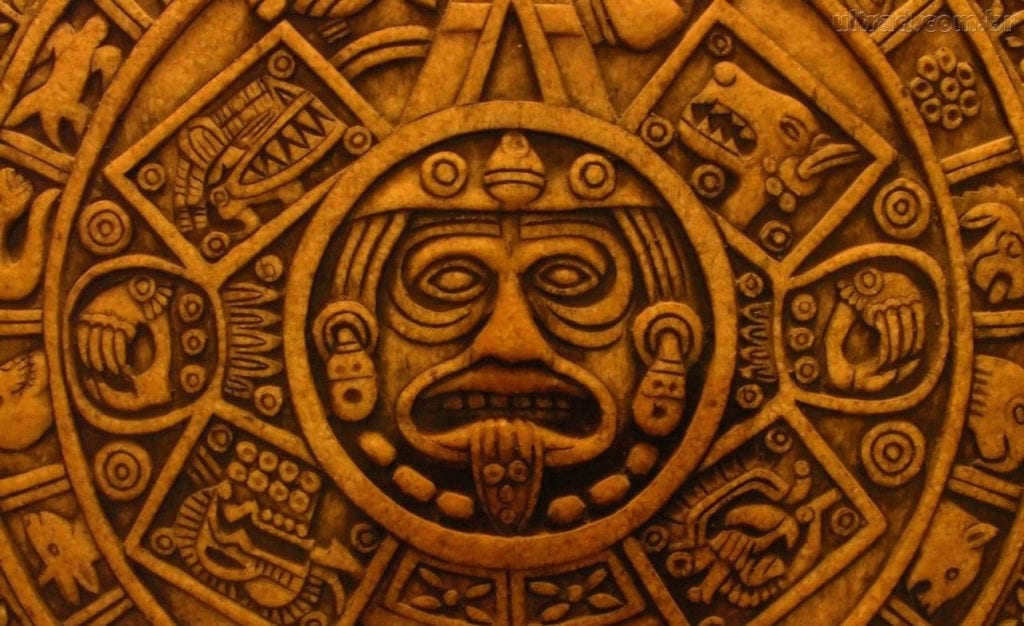
The Earth’s closest satellite has always been a source of inspiration for artists. The depiction of the moon, with its alluring and mysterious presence, has been a common theme in various works of art.
Throughout the mythology of different cultures, lunar deities have played a significant role. They are sometimes portrayed as symbols of passive and dark femininity, while other times they represent joy and enlightenment. The celestial union of the Sun and the Moon is a frequent motif found in these myths.
What is the reason behind the Moon’s name?
The origins of the name of our earthly “companion” can be traced back to different sources:
- In the Old Slavic language, it meant “light”.
- There is a possibility of its Latin origin, borrowed from the language of the ancient Jews. In that language, the word “Luna” meant “lodging”.
Historically, our celestial companion does not possess a beautiful mythological name. Its name is purely scientific. Moons (with a lowercase letter, in the plural) – this is one of the types of cosmic bodies. The one closest to us has been given a capitalized proper name.
As a result, this has led to some confusion and misunderstandings, even giving rise to jokes. Some people have proposed renaming it, but so far, this change has not taken place. Apparently, the name has become firmly established.
Studying the lunar body
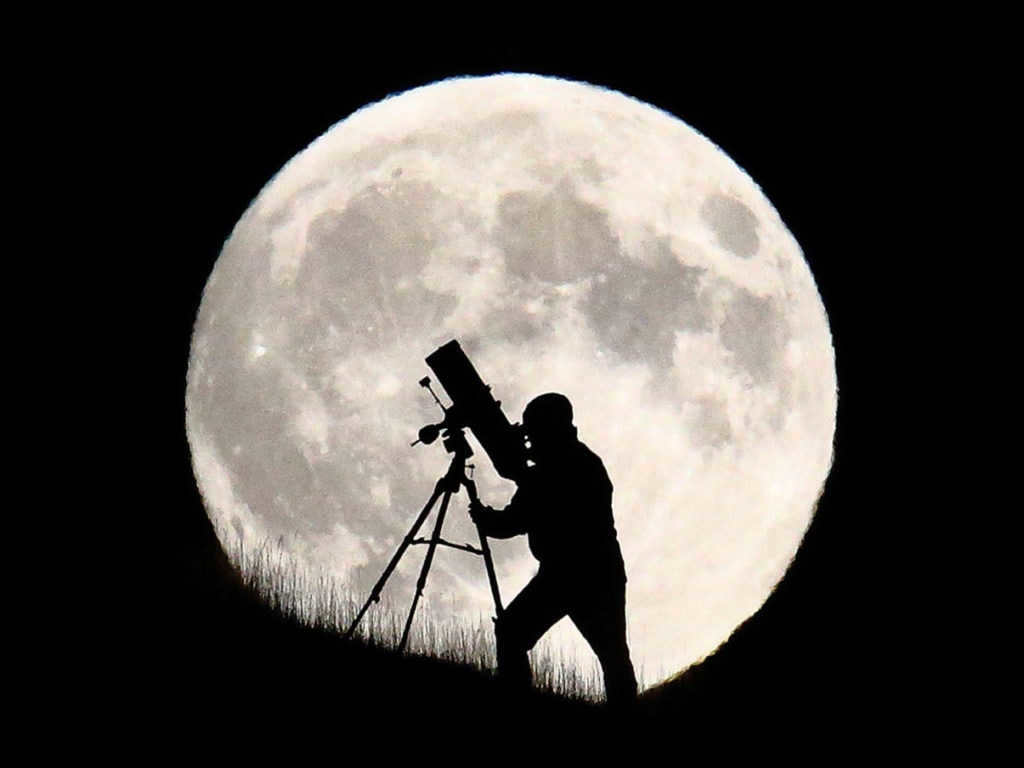
The moon, in terms of the vastness of the cosmos, is situated in close proximity. Therefore, individuals with an interest in astronomy have the opportunity to commence their studies by observing our nearest celestial companion. It is possible to familiarize oneself with the moon using just the naked eye. However, it is advisable to invest in a pair of binoculars or an affordable telescope for a more enhanced experience.
Of course, there may be some challenges along the way. To mitigate any potential issues, it is recommended to take certain precautions in advance:
- Purchase lunar maps to gain familiarity with the names and locations of various objects.
- Select the optimal location for observations, as street lighting in urban areas can pose difficulties for novice astronomers.
- Take into account weather conditions such as rain, snow, clouds, and fog, as they can hinder your ability to engage in your preferred activity.
- Study the moon’s orbital motion cycle, taking into consideration the geographical coordinates of your location.
- Acquiring experience, skills, and abilities will manifest. The determination of a vigilant observer will surely be rewarded with discoveries accompanied by delightful impressions.
If you have discovered an error, kindly highlight the text fragment and press Ctrl+Enter.
Despite the fact that countless telescopes gaze at the Earth’s satellite every night, the Moon remains the most enigmatic celestial body for conspiracy theorists. No other planet has ever presented humanity with such a multitude of mysteries. The things that amateur astronomers and scientists have witnessed on the Moon! Peculiar blackouts occurring where they shouldn’t, UFOs spanning kilometers in diameter, colored mist, flashes and lights, objects traversing the surface. So, what exactly is the moon?
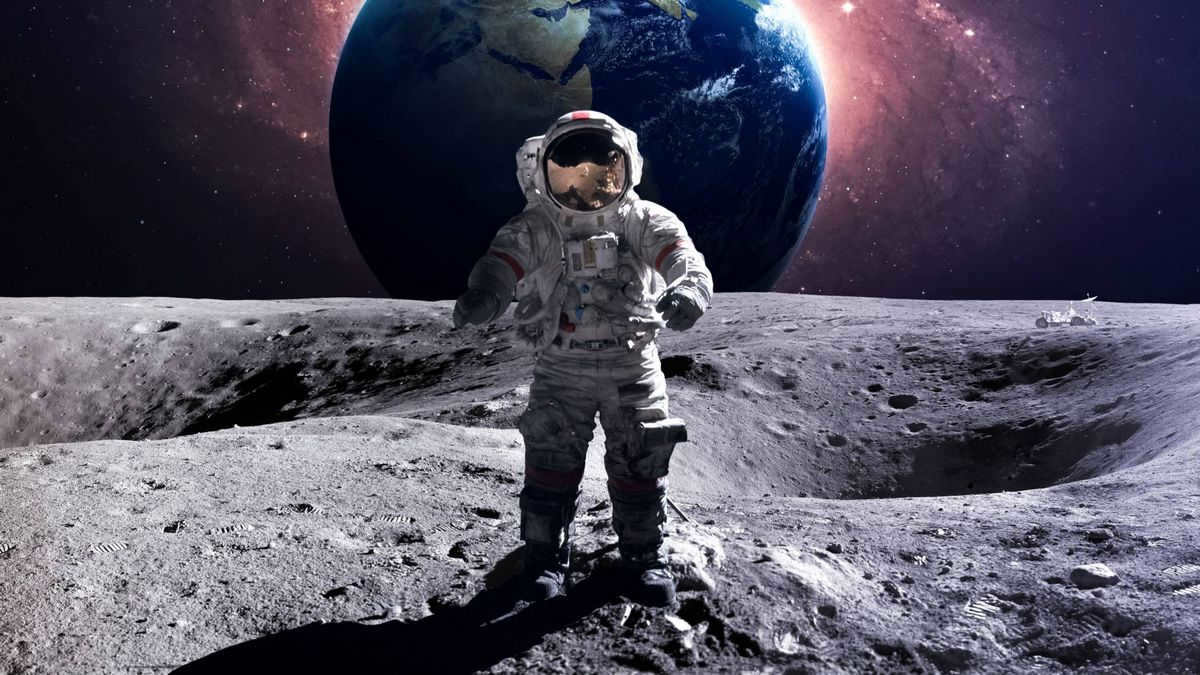
The Moon has long been a source of fascination for astronomers due to its mysterious and unusual phenomena. As far back as 1935, scientist Francis Bailey reported observing peculiar “starlight” emanating from one of the moon’s dark craters. This observation was later corroborated by NASA astronauts, including Buzz Aldrin who witnessed flickering flashes on the lunar surface during the Apollo 11 mission. Interestingly, Aldrin and his colleague Neil Armstrong chose not to report these sightings on air. Notably, NASA continues to publish the “Chronological Catalog of Lunar Events,” a comprehensive record documenting and detailing the various enigmatic happenings on the Moon.
Andrey Arkhipov, a Kharkov-based radio astronomer, has put forward a bold claim that the Moon is not a natural satellite of the Earth, but rather an artificial one that has served as a base for extraterrestrial spacecraft for a staggering four billion years. After conducting meticulous calculations and analyzing the statistics, the scientist made a startling discovery: a mere 44% of lunar missions managed to avoid mishaps and achieve their intended objectives. In stark contrast, when venturing towards the more treacherous and distant planet of Venus, the success rate surged to a much higher 67%! Isn’t this revelation enough to provoke a sense of awe and astonishment?
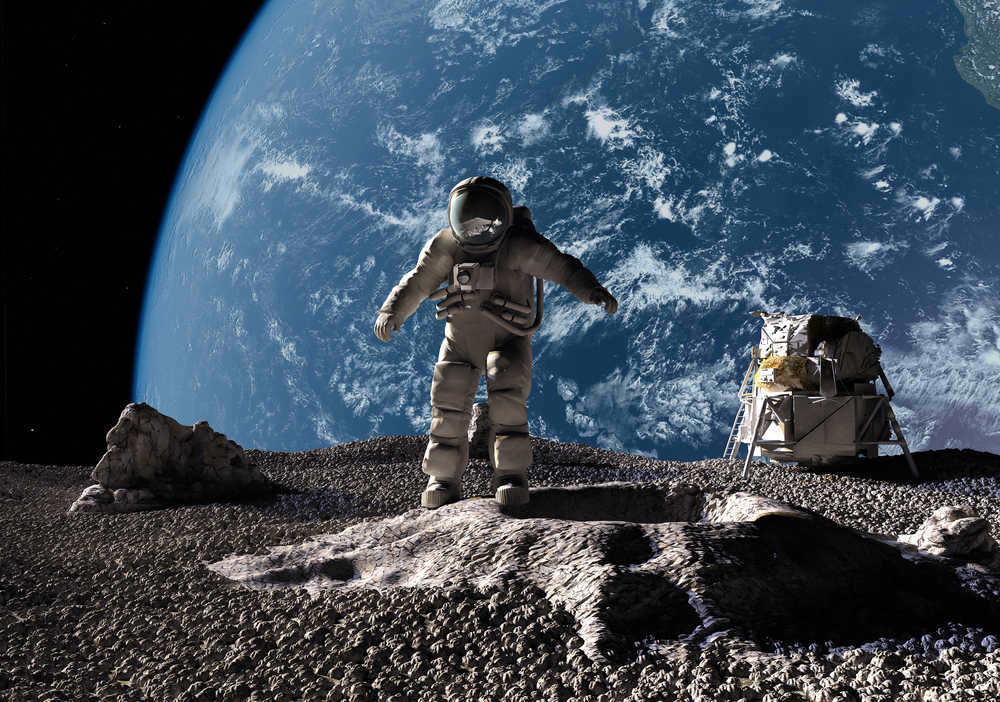

Arkhipov highlighted that incidents involving spacecraft often had peculiar occurrences on the lunar surface as precursors. On one occasion, an unidentified point started glowing in the shadows. Additionally, a light source was observed in the Aristarchus crater, while an orange luminescence manifested in the Gassendi crater. It is worth noting that subsequent to these incidents, the “Hagoromo” probe was sent into lunar orbit but ceased to provide any response to inquiries.
The Moon is an unusual celestial body. It is smaller than Mars and could potentially exist as a separate planet. In the solar system, there are more than a hundred satellites, and the Moon ranks as the fifth largest among them. However, the other four large moons orbit gas giant planets.
Some scientists argue that the Earth lacks sufficient gravitational force to capture and retain such a sizable object. Despite this, the Moon continues to orbit the Earth as observed. On the other hand, certain scientists believe that the Moon predates the Earth. Interestingly, only Earth is privileged to witness lunar eclipses of the Sun, unlike other planets with their own satellites.
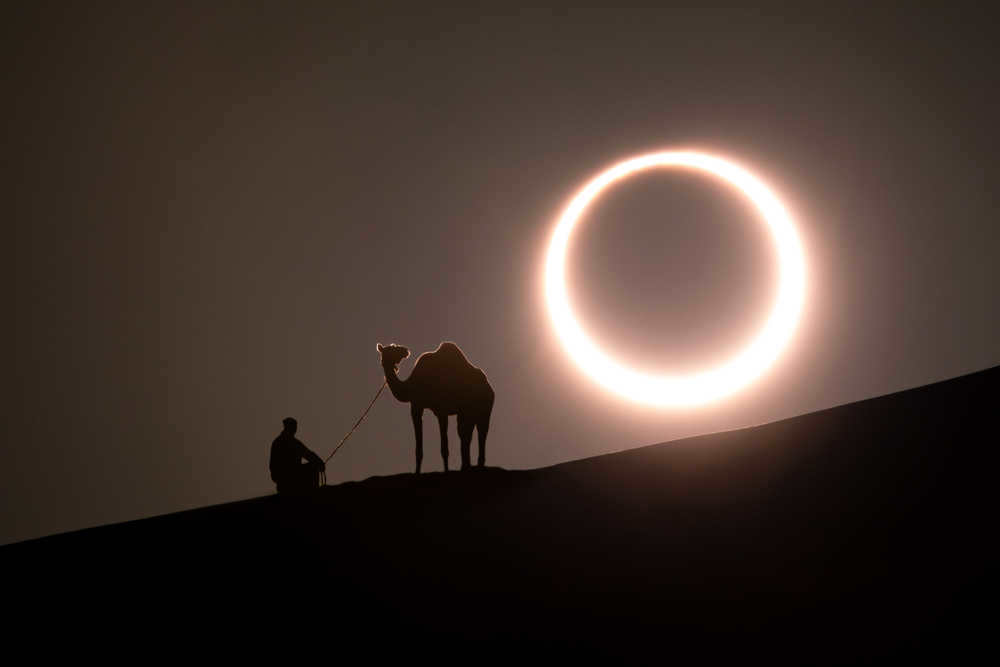
The Moon’s orbit is nearly a flawless circle. Additionally, the Moon itself possesses an almost ideal shape. When observed from our planet, humanity perceives it as a perfect circle. It’s remarkable to consider that this satellite, purportedly formed from a collision between Earth and another planet, maintains such an immaculate form. Conversely, envision the peculiar shape of Earth itself if we were to remove all its oceans. It would resemble a fruit that had been partially consumed. On the other hand, the Moon is nearly flawless.
Furthermore, even amidst atmospheric distortions, an observer from Earth always perceives a perfect circle during a full moon. Considering that the Moon is a sphere, one would expect to see shadows and penumbrae. However, they are absent. Why does the Moon reflect light back to Earth with its entire surface? It’s a perplexing phenomenon.
The KGB’s Surveillance of UFO Contactors: A Soviet Men in Black Story
One intriguing aspect of the Moon is the presence of peculiar stripes in the photos, resembling “ribs of rigidity.” Interestingly, similar stripes have been observed on other satellites in the solar system, yet scientists have yet to decipher their origin.
An interesting anomaly lies in the fact that the entire visible surface of the Moon is dotted with craters, yet the back side of the Moon appears to have almost none. How is this possible? Does the Moon selectively encounter meteorites only on its “face”?
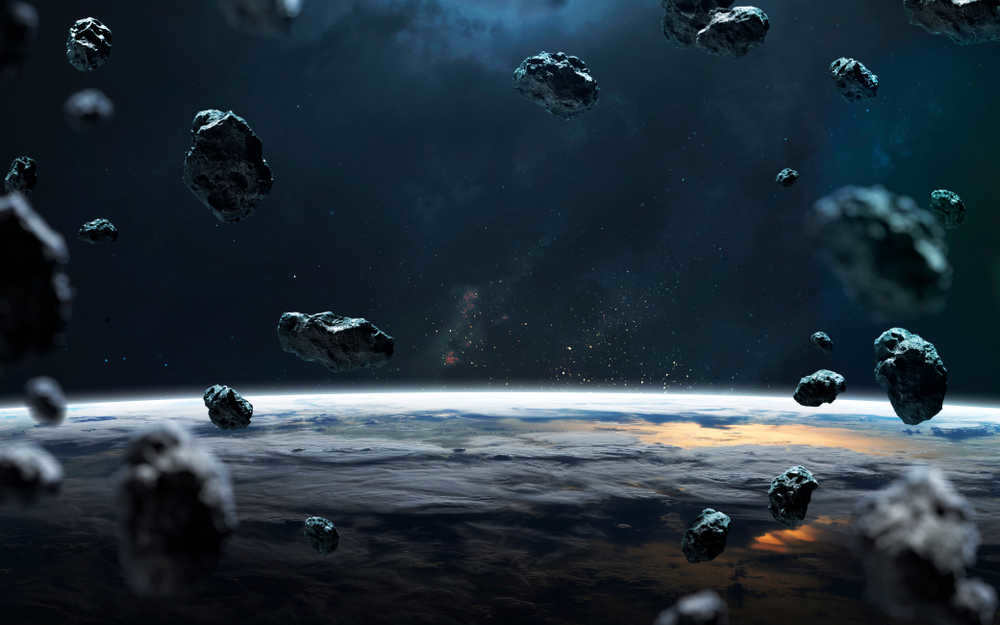
The nature of lunar craters remains a mystery. Experts have reached a consensus that they are the result of meteorite impacts. It is worth noting that these craters vary in size, but share similar depths, with the larger ones featuring a convex shape at the bottom. However, considering the Moon’s surface has been exposed to the harsh conditions of space for billions of years without the protection of an atmosphere, one would expect it to be riddled with deep craters akin to a battlefield strewn with shells. Could it be that beneath the lunar regolith, the layer of soil covering the Moon’s surface, lies a solid shell? This hypothetical shell would provide a plausible explanation for the observed phenomenon.
The lunar module collided with the Moon’s surface with a magnitude equivalent to the detonation of 11 tons of trinitrotoluene, which, considering the size of the celestial body, is akin to a mere mosquito bite. However, during a press briefing, NASA scientist Maurice Ewing made a peculiar comment, stating that “the outcome is so peculiar that I would rather abstain from attempting to interpret it”. It’s an odd remark, isn’t it? There exists some information, yet the Americans dismiss it casually. Is the Moon empty inside? No, I haven’t come across such a notion!
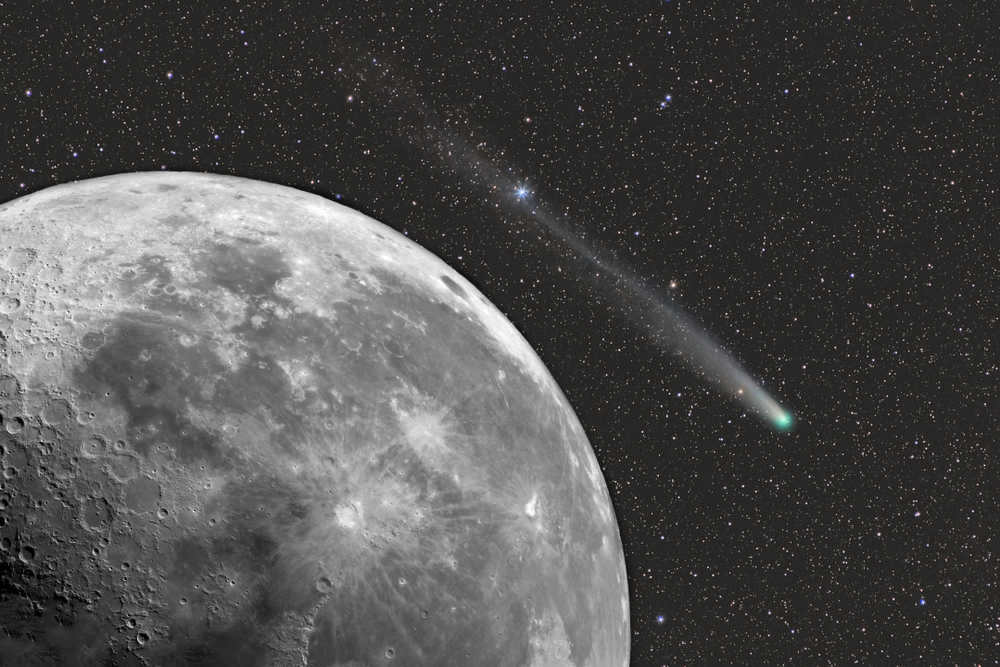
On the other hand, a different scientist from the University of Massachusetts expressed the idea that the moon may actually be hollow. Gordon MacDonald made this suggestion based on data from the study of the Earth’s satellite’s gravitational field. He was not the only one to propose this theory, as NASA inspector Ken Johnson also observed that when a probe fell onto the moon’s surface, the celestial body not only “rang” but also vibrated for several hours. The vibrations were incredibly even, leading some to believe that there might be large “shock absorbers” inside the moon.
Who was behind the assassination of the Soviet Union’s “Star Wars” visionary and why has the investigation into the space engineer’s murder remained unsolved?
Harold Ury, a Nobel laureate in chemistry, implicitly acknowledged that the Moon is a solid shell concealing something unknown. When he received data on the chemical elements present in lunar rocks, he described it as “mind blowing”. The remarkable fact is that the Moon contains an abundance of titanium, a metal commonly used in the construction of heavy-duty submarine hulls and other weaponry, surpassing the Earth’s supply by tens of times. Many scientists agree that if they were to construct an object akin to the Moon, titanium would be their material of choice. Additionally, traces of uranium-236 and neptunium-237, elements that are typically found in minuscule quantities on Earth, have been discovered on the Moon. It is believed that these elements may have been formed during the planet’s inception and subsequently decayed over time.
There might exist an entire nation over yonder
Should all this hold true, it raises another query: what lies within the Moon? There is a division among scientists on this matter. The most level-headed are inclined to believe that the Moon may indeed possess voids beneath its surface – natural formations. The origin of these voids and their contents necessitate further investigation.
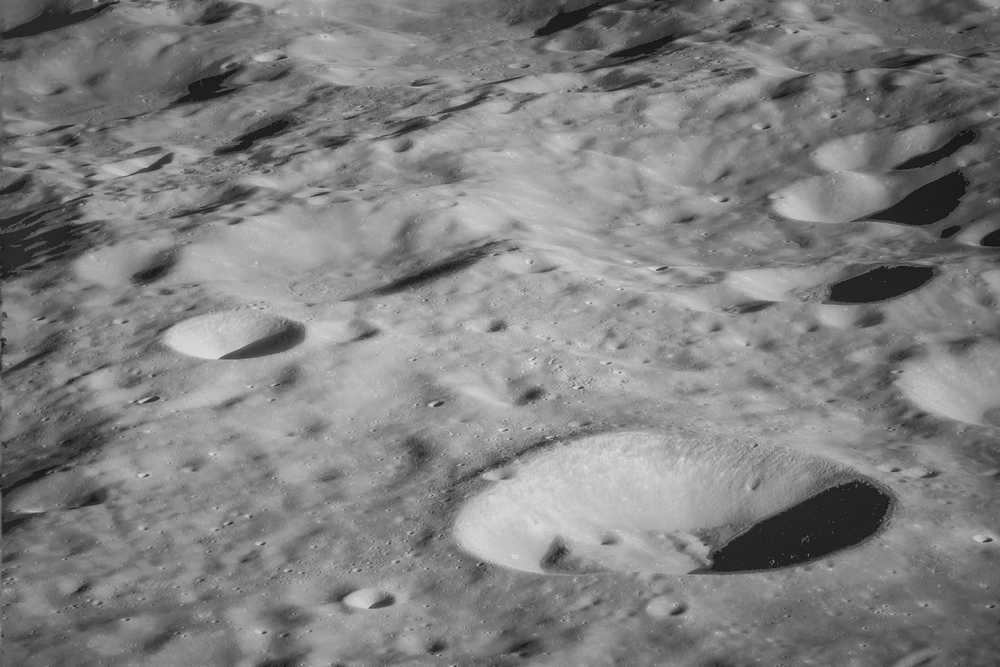
The most radical thinkers believe that there may exist an artificially created environment within the Moon. It is speculated that from this hidden environment, large “flying saucers” measuring several kilometers in size occasionally emerge and silently glide over the Moon’s surface. It is suggested that these UFOs are piloted by extraterrestrial beings who can safely descend to Earth, explore our planet, and return to their lunar “home.”
In support of this theory, there have been numerous UFO sightings and recordings of unidentified objects on the surface of the Moon. Additionally, experts at NASA have discovered traces of unknown vehicles in one of their archival photos of the Moon’s surface. These traces were found in areas where astronauts did not land, and their age is indicated by the fact that some of the tracks are covered with fragments of lunar rock.
What happened to the UFO that crashed into the lake in Karelia and why are locals still afraid to venture into the forest at night?
However, it is possible that the hollow moon is not necessarily an artificial station created by extraterrestrial beings. It could be the remnants of an ancient human civilization that once mastered space travel but eventually disappeared, perhaps submerged by a great flood. As their descendants, we are left with the responsibility of dealing with our own issues. In this case, the moon would be regarded as an ancient artifact that belongs in a museum of astronautics.
The landing of the station is scheduled to take place between August 21 and 24. Simultaneously, an Indian spacecraft is making its way towards the moon. Both missions are focused on exploring the lesser-known South Pole of the moon, where they will search for water and conduct other scientific studies.
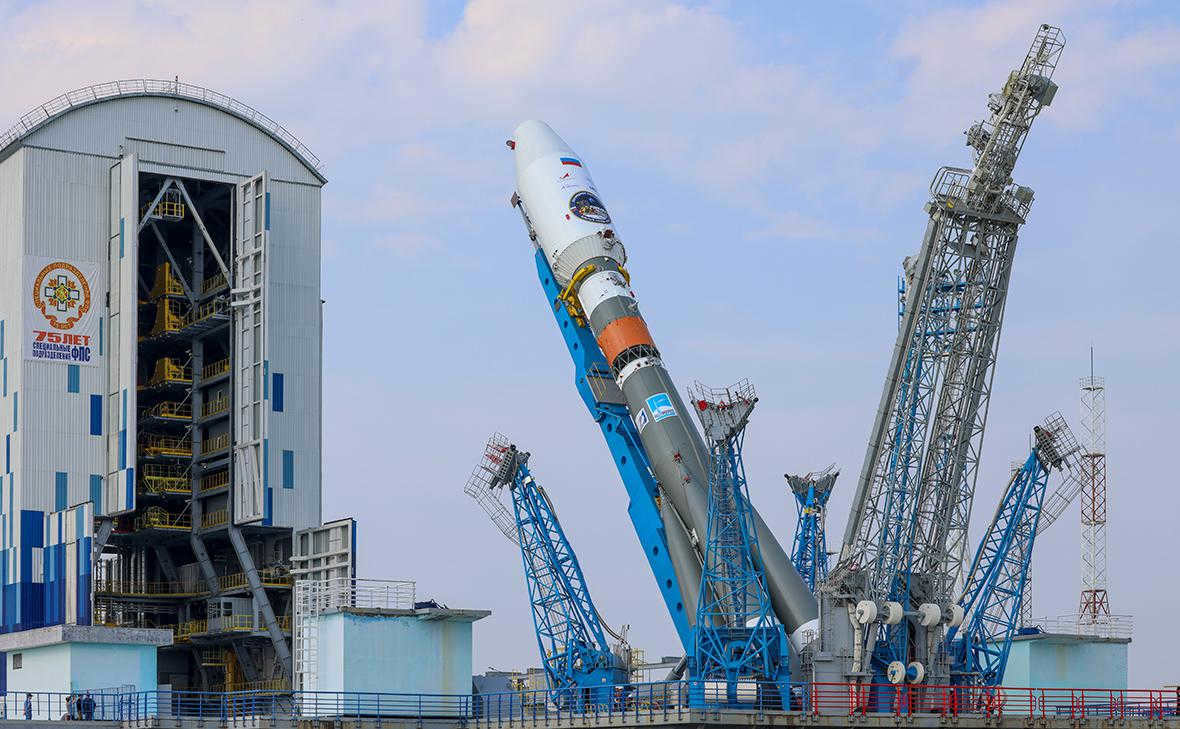
The final endeavor, known as the Soviet automated spacecraft “Luna-24,” was initiated in 1976. This groundbreaking mission successfully transported 170 grams of lunar soil back to Earth. Extensive analysis conducted by scientists revealed a remarkable discovery – the lunar soil potentially harbors water, with an estimated concentration of 0.1% by mass.
The Significance of the South Pole
Composition of the Station
The station is made up of two primary components – the lower section and the upper section. The lower section serves as the landing platform, while the upper section contains various scientific instruments, heat sinks, electronics, solar panels, a radioisotope heat and power source, antennas, and cameras. In total, there are eight cameras onboard. Two cameras are located at the bottom of the device and are utilized to create a precise landing system for future missions. After landing, these cameras will no longer be operational. Additionally, there are four panoramic cameras positioned on different sides of the apparatus. Furthermore, stereo cameras are present to observe the activities of the lunar manipulator complex. This complex consists of a one and a half meter mechanical arm with a bucket, allowing scientists to excavate the lunar surface and extract samples from varying depths.

The lunar station has a total weight of 1.8 tons, with the scientific equipment weighing 31 kg. According to Bloshenko, “everything is essentially made in Russia.” The scientific equipment for Luna-25 was designed by the Institute of Space Research of the Russian Academy of Sciences (IKI RAS). Control of the equipment will be carried out from Earth.
Station’s functions
The mission has a dual purpose, encompassing both scientific and practical objectives. The former focuses on researching the origins and evolution of the Moon, while the latter aims to explore the potential for future lunar development. The primary goal of the expedition is to perfect the technology for a soft landing near the South Pole, laying the groundwork for future missions. This task will be accomplished by the orbital component of an automated probe. As emphasized by Roscosmos, the importance of a soft landing has been underscored by previous experiences of other nations. In April, the Japanese lunar module Hakuto-R, carrying the UAE lunar rover Rashid, crashed upon landing, and in 2019, the Indian spacecraft Chandrayaan-2 suffered a similar fate. The Luna-25 landing vehicle will conduct its own exploration of the lunar surface near the South Pole, utilizing cryogenic drilling techniques. One of the main objectives is the search for water, which, if found, could eliminate the need for water delivery from Earth during future space missions. Moreover, water could serve as a valuable resource for creating rocket fuel, as it can be split into oxygen and hydrogen. According to Bloshenko, the cost of delivering one liter of water from Earth can start at $500,000 (48.8 million rubles), while a foreign space robotics company is currently offering to transport 1 kg of payload to the Moon for $1.2 million (about 117.1 million rubles).
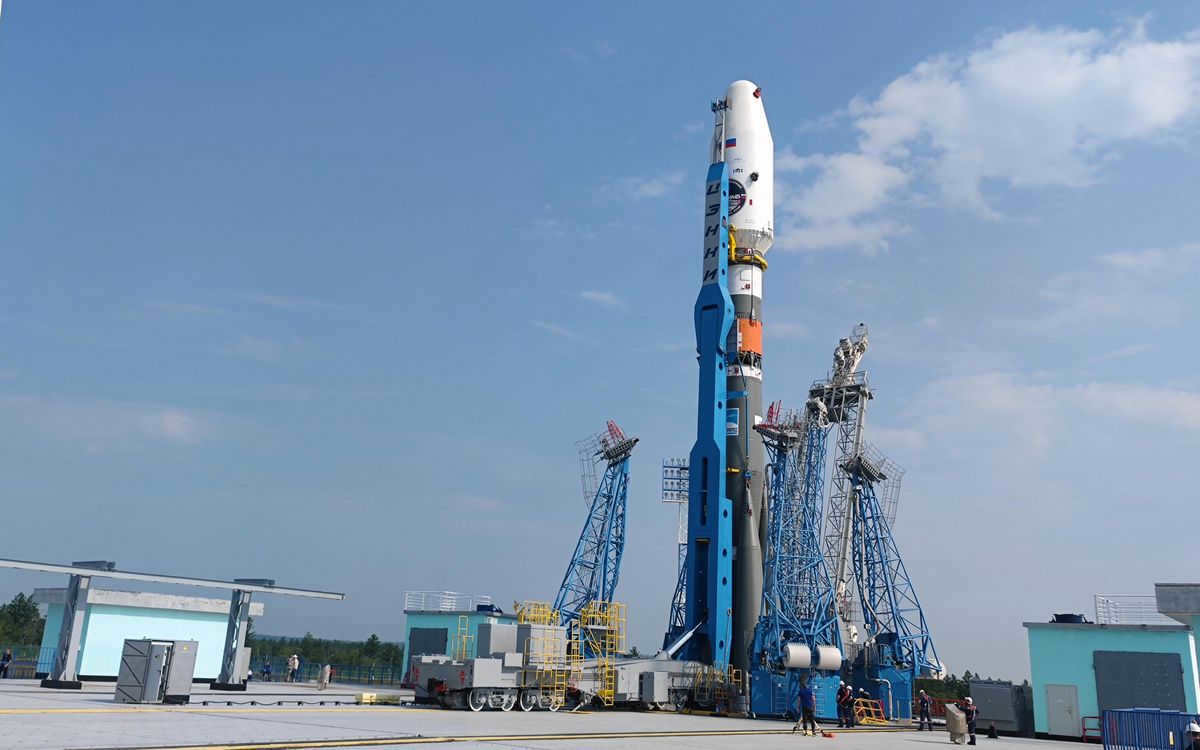
What is going to occur in the future
The launch of Luna-25 is part of the initial phase of Russia’s lunar program. The program, which was approved in 2018, is divided into three stages: “Sortie,” “Outpost,” and “Base.” The first stage focuses on developing the near-lunar station’s base module, testing the prospective manned spacecraft called “Eagle,” and conducting unmanned overflights of the Moon. Additionally, the “Luna” series of stations will be used to explore the satellite, with three more missions planned in the next decade. The launch of Luna-26 is scheduled for 2027 and will serve as an orbiter for remote lunar exploration. It will also act as a signal repeater for Luna-27, a more advanced landing station equipped with a drilling rig. Following Luna-26 and Luna-27, Luna-28 will be sent to the Moon. Luna-28 is a prototype of a lunar takeoff and landing complex and will conduct a mission to collect soil samples, specifically preserving volatile components and water ice. During the “Sortie” stage, the construction of the super-heavy rocket “Yenisei” is planned to enable manned flights to the Moon in the second stage. The second stage, scheduled for 2025-2035, will focus on developing means of accessing the lunar surface and conducting a two-week-long manned landing to establish and place the initial base elements. In the third and final phase, a fully functional visiting base on the Moon and two observatories will be completed. Additionally, navigation vehicles will be deployed in lunar orbit between 2036-2040 to map out the routes for equipment working on the surface.
What are the other nations with lunar exploration programs?
Russian President Vladimir Putin recently announced the revitalization of Russia’s lunar program, joining other countries such as the United States, China, and India in their pursuit of lunar exploration.
The American “Artemis” Program
In the United States, the lunar program is known as the Artemis program. NASA’s goal is to establish a permanent human presence on the Moon, which will serve as a stepping stone for future Mars missions. The program will begin with unmanned and crewed missions around the Moon, followed by lunar landings. The second phase will focus on regular Moon missions and the development of lunar infrastructure. By 2028, NASA plans to construct the Lunar Gateway, a near-lunar base where astronauts can stay for extended periods of up to 15 years.
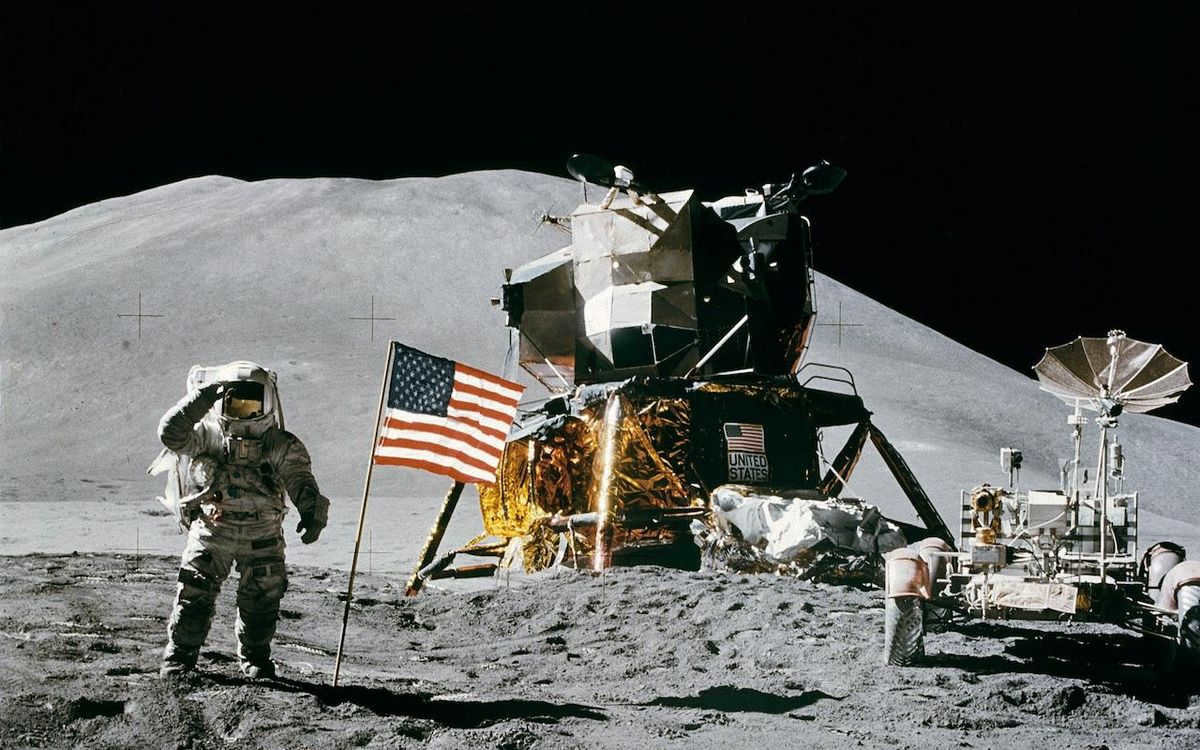
The SLS super-heavy launch vehicle, developed by Boeing, will be used to launch the missions. Its purpose is to send the Orion spacecraft into lunar orbit. The initial launch, which was unmanned, took place on November 16, 2022. The manned launch was originally planned for September 2023 but has since been postponed multiple times and is now scheduled for November 2024. A number of countries, including Australia, UK, Japan, UAE, Brazil, France, and others, have joined the US lunar program.
China
China, officially known as the People’s Republic of China, is a country in East Asia. It is the world’s most populous country, with a population of over 1.4 billion people. China has a rich history dating back thousands of years and is known for its ancient civilization, cultural heritage, and technological advancements.
China is a socialist country with a mixed economy. It is one of the world’s leading manufacturing and exporting nations, with a strong focus on industries such as electronics, textiles, and machinery. In recent years, China has also made significant advancements in technology and innovation, becoming a major player in the global tech industry.
China is known for its iconic landmarks, such as the Great Wall of China, the Forbidden City, and the Terracotta Army. It is also famous for its diverse cuisine, which includes dishes such as Peking duck, dumplings, and Sichuan cuisine.
In recent years, China has been making efforts to become a more sustainable and environmentally-friendly nation. It has invested heavily in renewable energy sources, such as solar and wind power, and has implemented strict environmental regulations to combat pollution.
Overall, China is a country with a rich cultural heritage, a booming economy, and a strong focus on technological advancements. It continues to play a significant role on the global stage and is a country worth exploring and learning about.
In recent years, China has significantly expanded its space ambitions. The country has successfully launched a series of probes called “Chang’e” to the Moon, and in late 2022, it successfully completed the construction of its own space station named “Tiangong” (or “Heavenly Palace” in English). By 2028, Beijing plans to establish a robotic base on the lunar surface, and by 2030, it aims to send a manned mission there. During this mission, two astronauts will utilize a lunar rover to conduct extensive research. In addition, in March 2021, China and Russia reached an agreement to collaborate on the development of a lunar station, which is scheduled to be deployed by 2035. The program consists of two phases. From 2021 to 2025, the focus will be on carrying out exploratory missions, during which three Russian and three Chinese automated stations will be launched. Following this, the construction phase will commence. To facilitate this process, the Luna-28 and Chang’e-8 automated stations will be dispatched to the Moon, and then the necessary infrastructure will be established using a combination of three Russian and three Chinese rockets. Once completed, the lunar station will be fully operational.
In 1608, the telescope was invented by master craftsman John Lippersguy, who introduced the world to this groundbreaking device. Since then, the telescope has allowed humanity to explore and examine the Moon, our planet’s cosmic satellite, in unprecedented detail. As the first celestial body to be visited by humans, the Moon has become the most extensively studied cosmic entity. It is also one of the most visible objects in our sky, second only to the Sun, which has fueled mankind’s enduring fascination with it. Today, the Moon, often romanticized and revered by poets, remains a subject of intense scrutiny and research. However, there is still ongoing debate about its classification – whether it is a planet or not. In this article, we will delve into this topic further.
What is the Moon
Thanks to the study of astronomy, a wealth of knowledge has been acquired about the Moon, which is Earth’s nearest celestial neighbor. Nevertheless, there are still those who ponder over the nature of the Moon – is it a planet or a star? To provide a clear-cut response to this inquiry, it is imperative to grasp the fundamental characteristics of these cosmic entities.
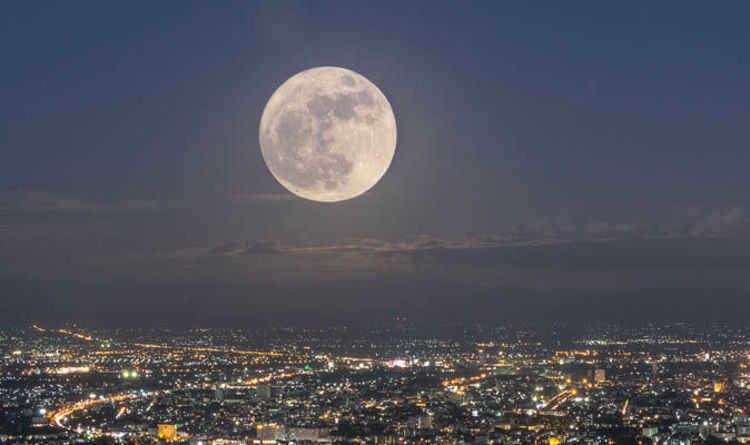
Origin
The moon is a well-known sight in the night sky, but many people never stop to think about where it came from. Some believe that the moon has always been there, while others are curious about its origins. There are several theories about the moon’s origin, each with its own evidence and counterarguments. Three main hypotheses have emerged:
- The moon and the Earth formed from the same protoplanetary cloud.
- The moon was created from a collision between Earth and a large celestial object.
- The moon was captured by Earth after it had already formed.
The Concept of a Celestial Body
Within the field of astronomy, celestial bodies are commonly referred to as expansive orbs of gas that emit radiant light and maintain their balance through the force of their own gravitational pull. Within the depths of these celestial bodies, known as stars, a process known as thermonuclear fusion occurs, and the temperature within these bodies can reach millions of kelvins.
Celestial bodies typically possess a significant diameter and substantial mass. The chemical composition of these entities consists primarily of light elements, with a weight that is generally less than that of helium. In contrast, the moon is a spherical object composed primarily of heavier elements such as magnesium, titanium, silicon, iron, and sodium. Unlike stars, the moon does not experience thermonuclear reactions, and its temperature fluctuates within a wide range from -160 to +120 degrees Celsius.
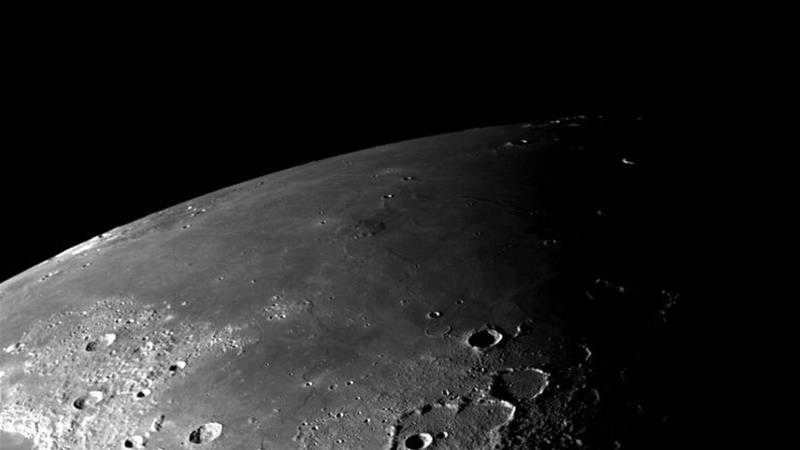
Is the Moon a Star or a Planet?
Despite having its own gravitational field that can cause tides in our planet’s oceans, the Moon is not capable of attracting large objects. This distinction makes it clear that the Moon is not a star. So, what is it exactly? Let’s delve deeper into this question.
In the field of astronomy, there exists a precise definition for the term. It refers to a celestial entity that revolves around a star. Such an entity must possess sufficient gravitational forces to attain a spherical shape, while simultaneously lacking the mass required for fusion reactions. Many individuals pose the question, “Is the moon classified as a planet or a star?” You and I have already reached the conclusion that this celestial body does not fall under the category of a star. The majority of planets are composed of the heaviest elements. However, astronomers are aware of objects whose composition is primarily comprised of gases, such as hydrogen, helium, and methane.
Each planet was formed from a state of matter that was liquid in nature. Over time, the heaviest elements gradually concentrated in the center, resulting in the formation of a core, while the lighter elements remained on the surface.
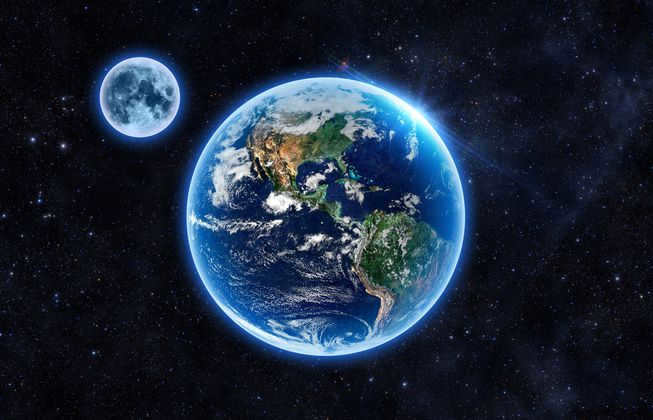
Is the Moon a planet or not?
One question that often leaves even adults puzzled is whether the Moon is considered a planet or not. Let’s delve into this topic and try to find an answer. The Moon possesses certain characteristics that align with the definition of a planet, such as containing heavy substances in its composition, having a rounded shape, and a core abundant in iron. However, it is important to note that this celestial body also exhibits distinct features that are not typically found in planets. For instance, the Moon’s inner core is relatively small in comparison to planets, and it exerts a lower gravitational force.
If the majority of celestial bodies have a core radius that accounts for approximately 50% of their total size, then our nocturnal celestial luminary has a core radius that accounts for only about 20% of its total size. Moreover, when addressing the question of whether the Moon can be classified as a planet or not, it is important to highlight another significant characteristic. This characteristic pertains to a planet’s ability to clear its own orbit of other celestial objects. The Moon lacks this ability, which is why its surface often contains large celestial bodies and various space debris. Consequently, it can be definitively stated that the Moon is not a planet. Now, let us delve into the comprehensive definition of a satellite.
Definition of a satellite
We have already established that the moon is not classified as a planet or a star. But what exactly is a satellite? Satellites are objects that revolve around other celestial bodies along a specific path. Their movement is governed by the force of gravity. These orbits can either be stable or change over time.
A celestial body can only become a satellite if it is captured by the gravitational field of another cosmic object as it travels through space, or if it forms from the same gas and dust cloud that gave rise to the planet itself. Now let’s talk about our own lunar satellite. The Moon indeed orbits around our planet, but its origin story is a bit different. It is believed that over four billion years ago, the Earth, which was still in its protoplanetary stage, collided with a similar body called Theia in outer space.
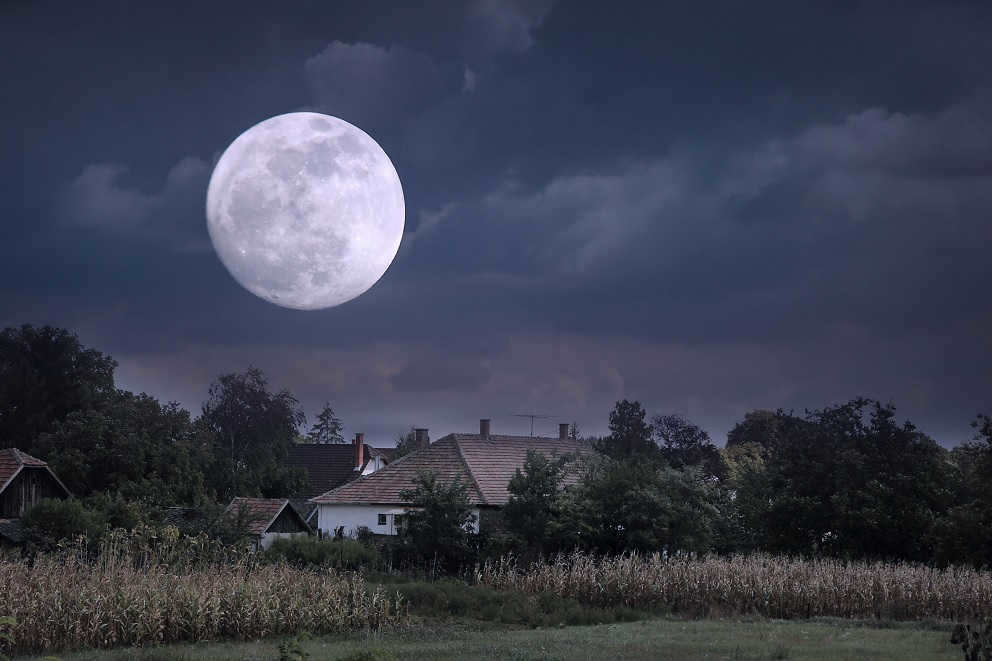
This incident happened tangentially, and then in the Earth’s orbit it collided with a considerable amount of debris, from which supposedly the Moon was formed in the future. Notwithstanding this past event, astronomers maintain the belief that the Moon is indeed a satellite of the Earth.
If someone were to ask you, “Is the Moon a satellite or a planet?”, you would be able to provide a clear-cut response that this celestial body is indeed a satellite of the Earth.
A contentious query
Nonetheless, in recent times, a number of scholars have been making efforts to validate the notion that this extraterrestrial entity is indeed a planet. They justify their claims by pointing out the Moon’s position among the other satellites in the solar system. Primarily, this celestial entity possesses an excessively substantial mass when compared to other satellites. Furthermore, the Moon is situated at an exceptionally vast distance from the Earth, making it unlikely to be captured by its gravitational force. Additionally, this enigmatic celestial marvel orbits around our cerulean planet in a non-equatorial plane, a characteristic uncommon among genuine satellites.
The question of whether the Moon is a planet or a satellite remains open to many. It is possible that in the future, astronomers will classify the Moon as an independent planet. However, in current astronomy textbooks, it is universally regarded as a satellite.
An overview of the Moon
The Moon, a celestial body that has been a companion to Earth for centuries, does not emit light but has the ability to reflect it. In our country, it is recognized as Earth’s satellite, as we have previously discussed, and is the closest to the Sun. In terms of brightness in our sky, the Moon is considered the second brightest object after the Sun. Throughout history, humanity has only observed one side of the Moon due to its synchronous rotation with Earth’s own axis. The Moon’s orbit around our planet is irregular, at times moving closer and at other times moving farther away. Astronomers have long been intrigued by the complexities of its movement, a process influenced by factors such as the planet’s flattening and the gravitational pull of the Sun.
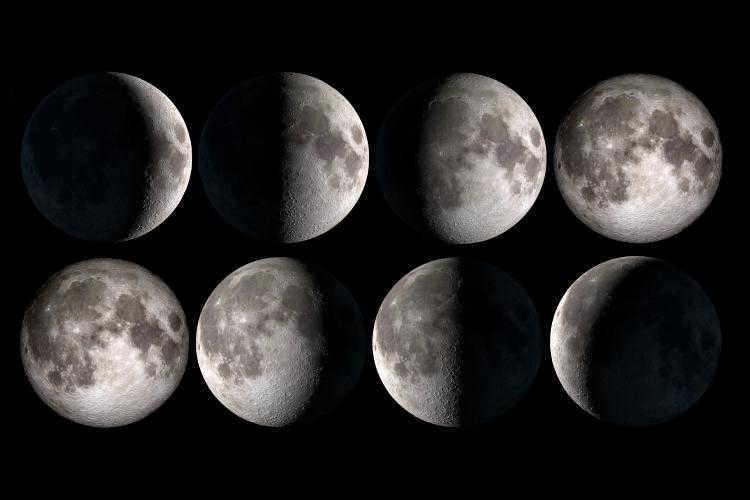
The Appearance of the Moon’s Surface
When we observe our enigmatic celestial companion, it appears as a luminous yellow entity, emanating a captivating radiance. Occasionally, its hue may resemble a pristine white or a deep orange, yet it consistently remains profoundly stunning. These varied transformations can be attributed to the manner in which we perceive the Moon through Earth’s atmospheric veil. Within this atmosphere, myriad particles are suspended, each capable of altering the spectrum of reflected light.
In reality, the Moon’s surface is far from the yellow and silvery appearance we perceive. It encompasses vast flat regions known as “seas,” which are, in truth, colossal craters formed by celestial collisions and subsequently filled with molten lava. Additionally, there are elevated regions on the Moon, forming a rugged and mountainous terrain.
The dawn of exploration
Since ancient times, this celestial object has captivated humanity, stirring curiosity and fueling exploration. The initial investigations of our planet’s companion date back to the second century BC, when Hipparchus endeavored to decipher the Moon’s motion, determine its dimensions, and measure its distance from Earth.
As mentioned previously, the invention of the telescope in 1608 revolutionized lunar studies. Astronomers were now able to scrutinize the satellite’s surface, revealing mountains and craters in intricate detail. This breakthrough led to the creation of the first lunar map by Giovanni Riccioli in 1651. It was during this time that the term “seas” emerged, referring to the dark regions on the Moon’s surface. These areas were named after illustrious figures by astronomers, further adding to the allure of lunar exploration.
In the 19th century, photography emerged as a helpful tool for astronomers, enabling them to conduct highly accurate studies of the lunar landscape. This breakthrough led to the creation of a photographic atlas in due course.
Exploring the Moon: The American Endeavor
When it came to lunar exploration, the United States found itself trailing behind the Soviet Union, who achieved the initial successes. In 1961, President Kennedy made a bold statement, declaring that by 1970, American astronauts would set foot on the moon.
To turn this ambitious plan into reality, a solid foundation was required. Extensive analysis of lunar surface images and investigation into anomalous phenomena occurring on the moon were undertaken to lay the groundwork.
Apollo 8 conducted the inaugural manned flight without the need for a landing, followed by an extensive survey of the lunar surface to plan for a future expedition. Subsequently, the Apollo 10 spacecraft embarked on a second mission, circumnavigating the moon. During this flight, the astronauts ventured as close as 15 kilometers to the lunar surface.
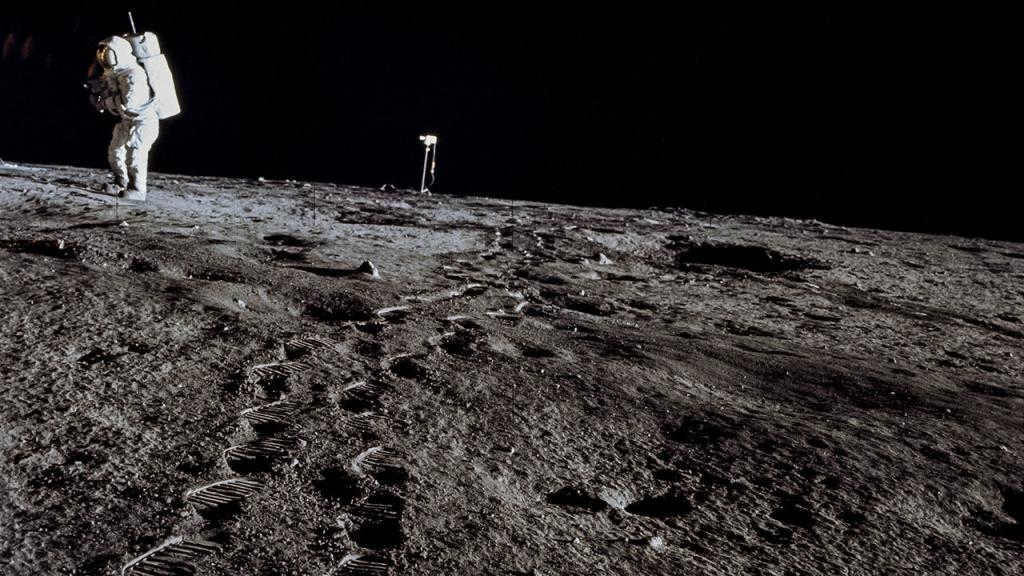
Following extensive preparations, the “Apollo-11” spacecraft was launched to the Moon, and on July 21, 1969, according to official reports, the American astronauts successfully landed near the Sea of Tranquility. Neil Armstrong had the honor of being the first person to step foot on the lunar surface, followed by Edwin Aldrin. The astronauts spent a total of 21.5 hours on the satellite.
The Earth has a natural satellite called the moon, which has the ability to exert influence on both the planet and its inhabitants. One of the ways it does this is through its effect on tides. The moon’s gravitational force attracts the waters of the World Ocean, causing the tide to recede from the coast. On the opposite side of the planet, the water is pushed in, creating a tide.
In addition to its impact on tides, the moon also has a connection to human biorhythms. This is because the moon’s gravity affects our organs and circulatory system, as well as our psyche. The strength of the moon’s influence varies depending on its phase, with different phases having different levels of impact.
Fascinating information
You and I have discovered that the Earth has a satellite known as the moon. Now, let’s acquaint ourselves with some captivating details about this natural satellite:
At a rate of approximately 4 centimeters per year, the Moon gradually distances itself from our planet.
As you may have observed, the Sun and the Moon appear to be of similar size when viewed in the sky. This remarkable coincidence can be attributed to the fact that our natural satellite is around 400 times smaller in terms of volume than the celestial luminary, yet the Sun is positioned 400 times farther away from our planet.
About 7% of sunlight is reflected from the surface of the Moon.
